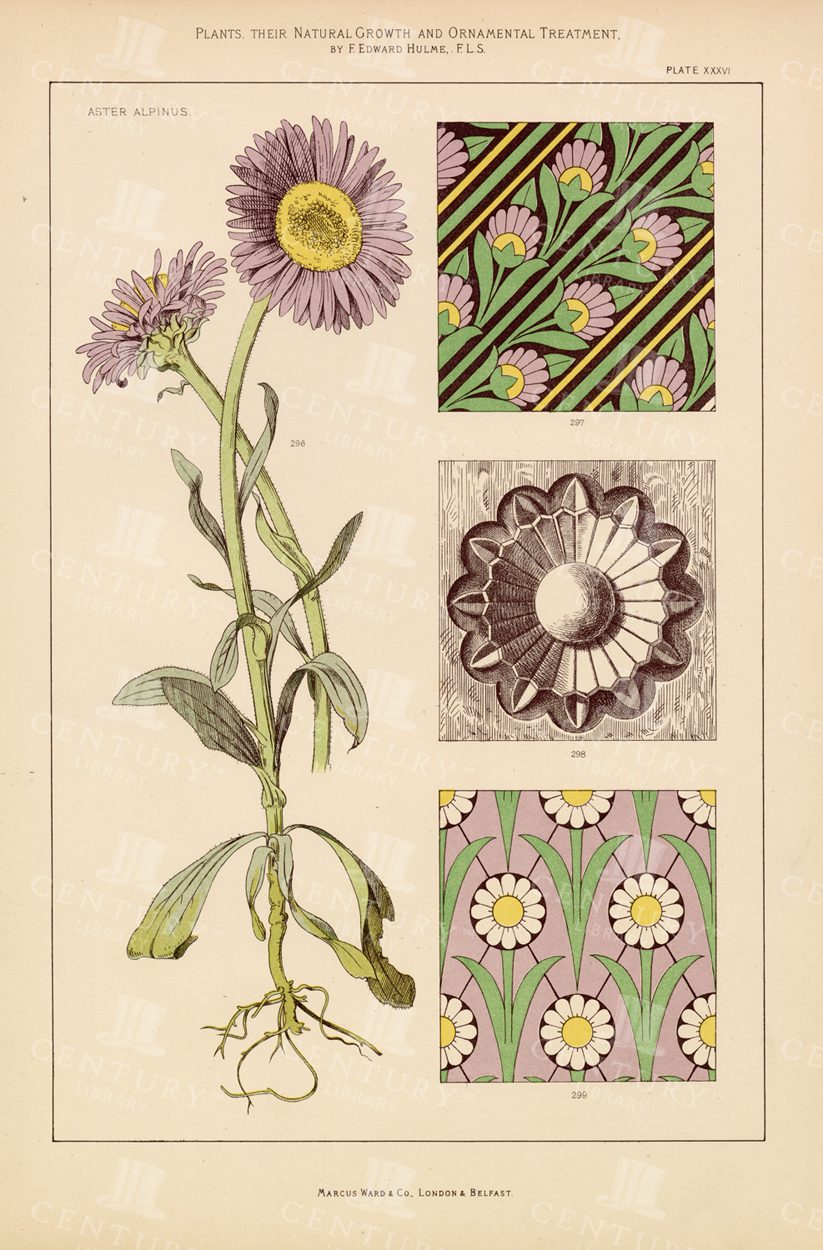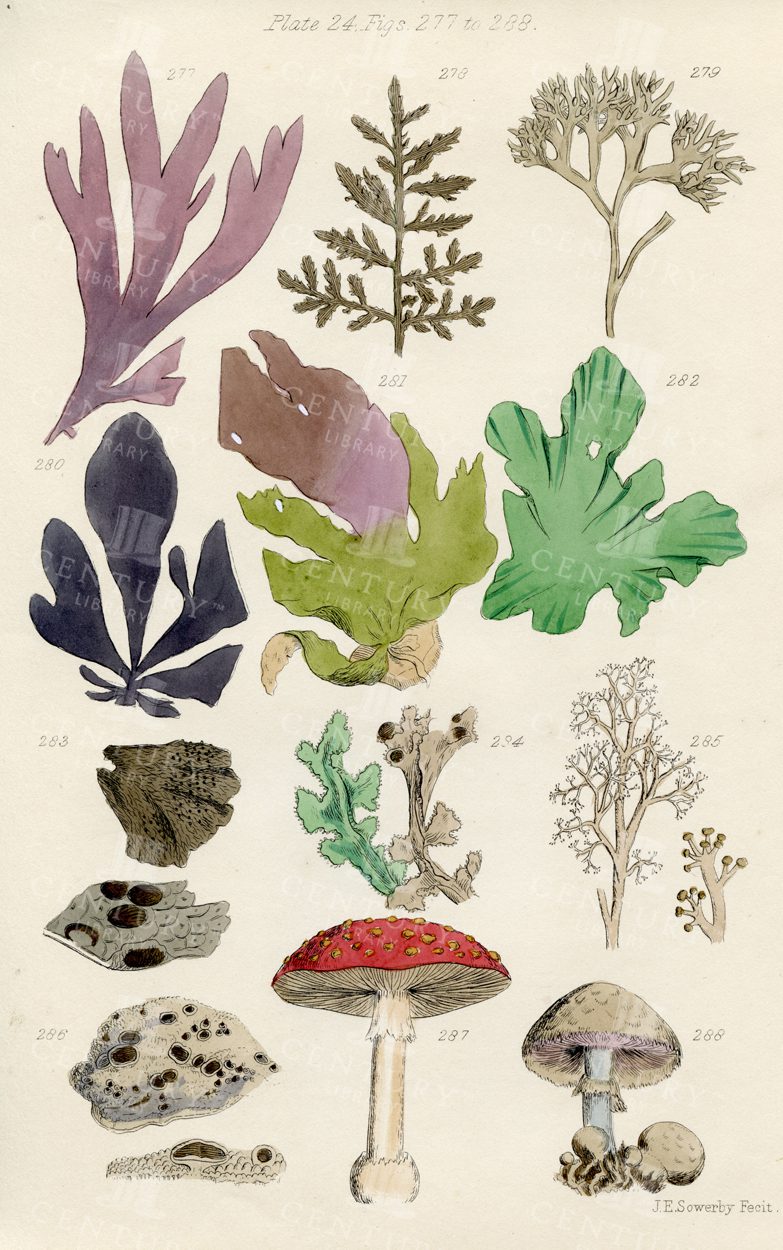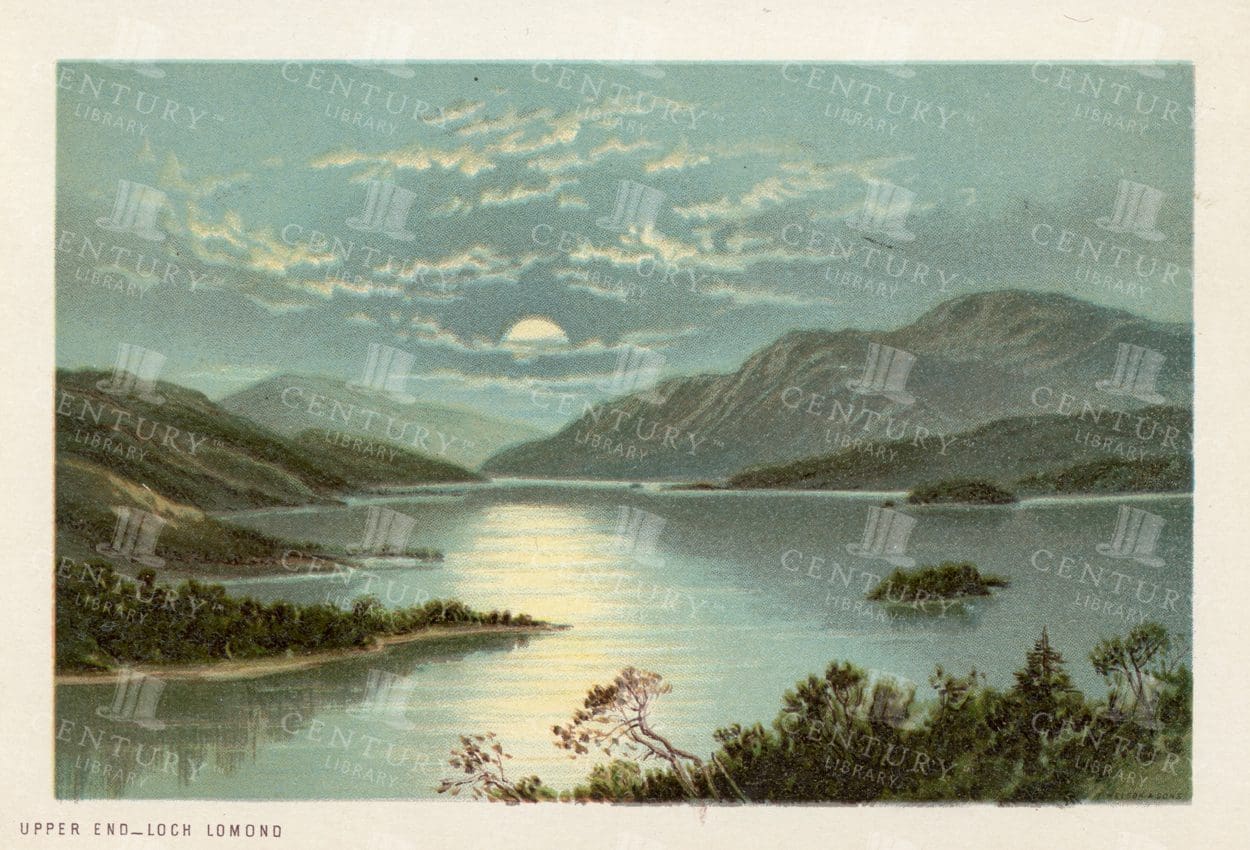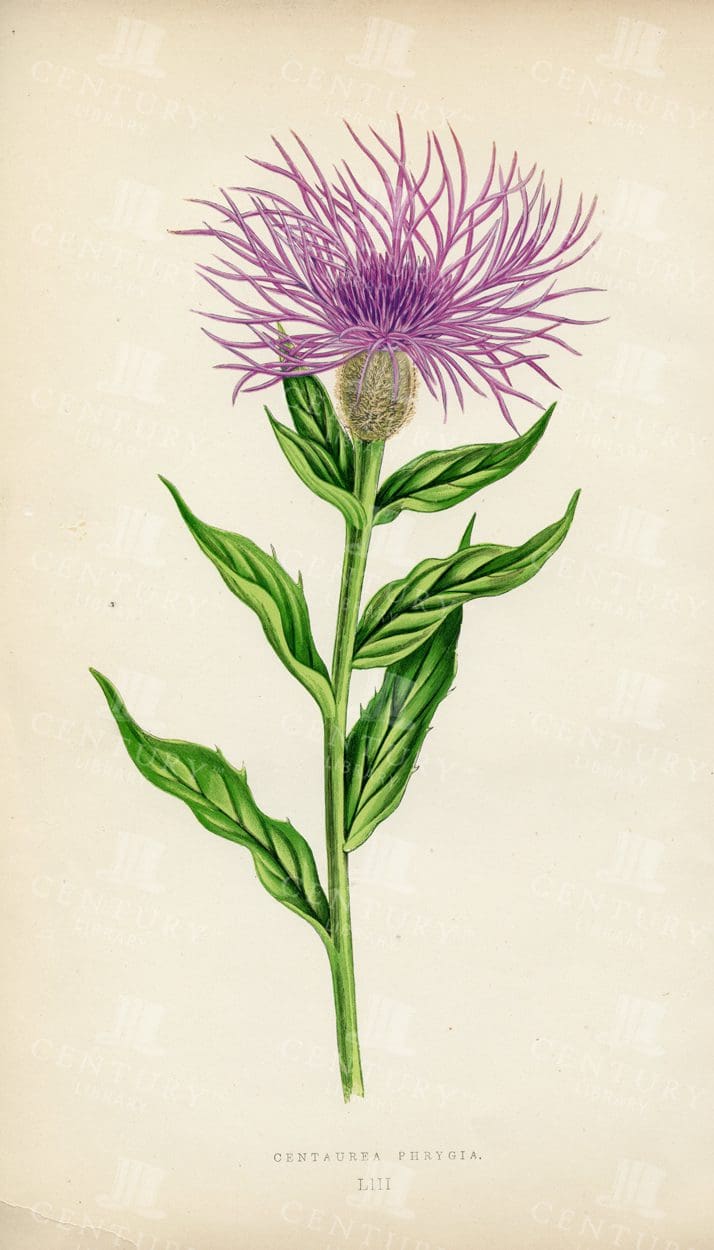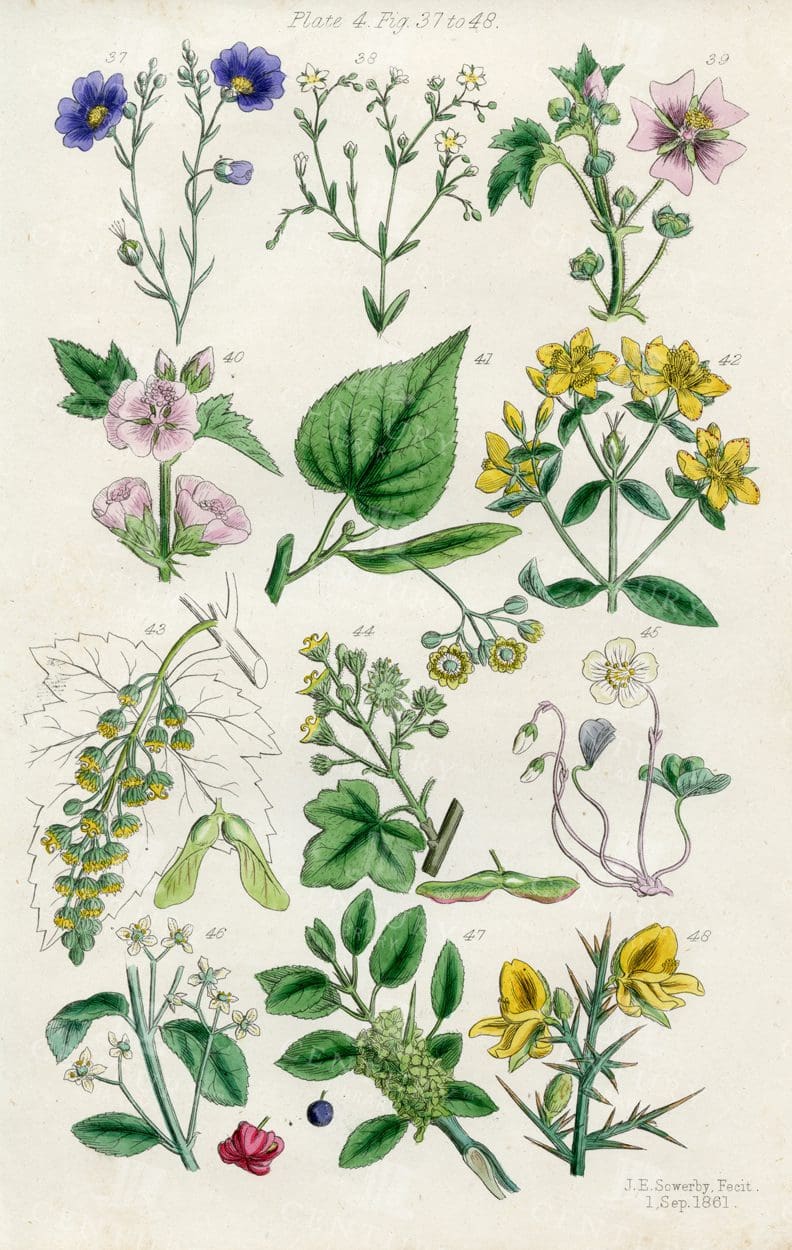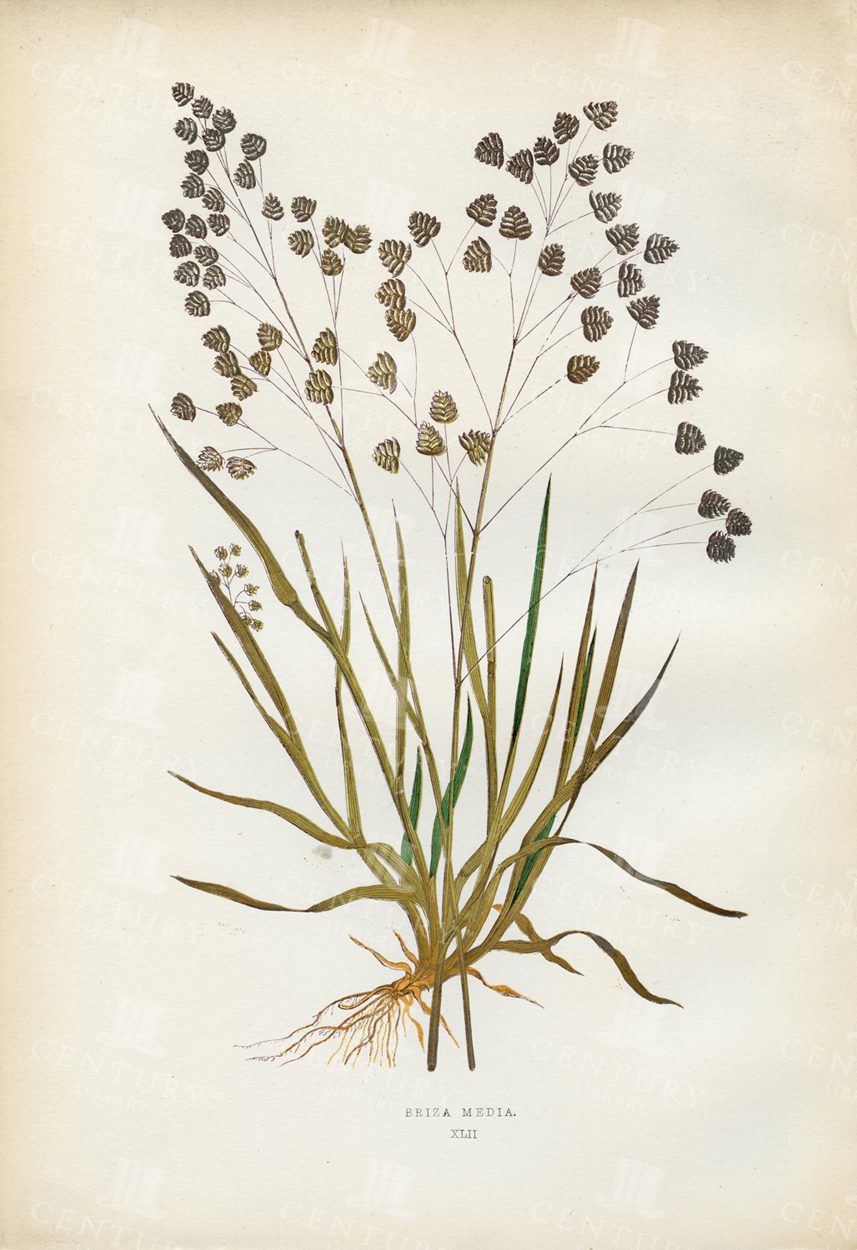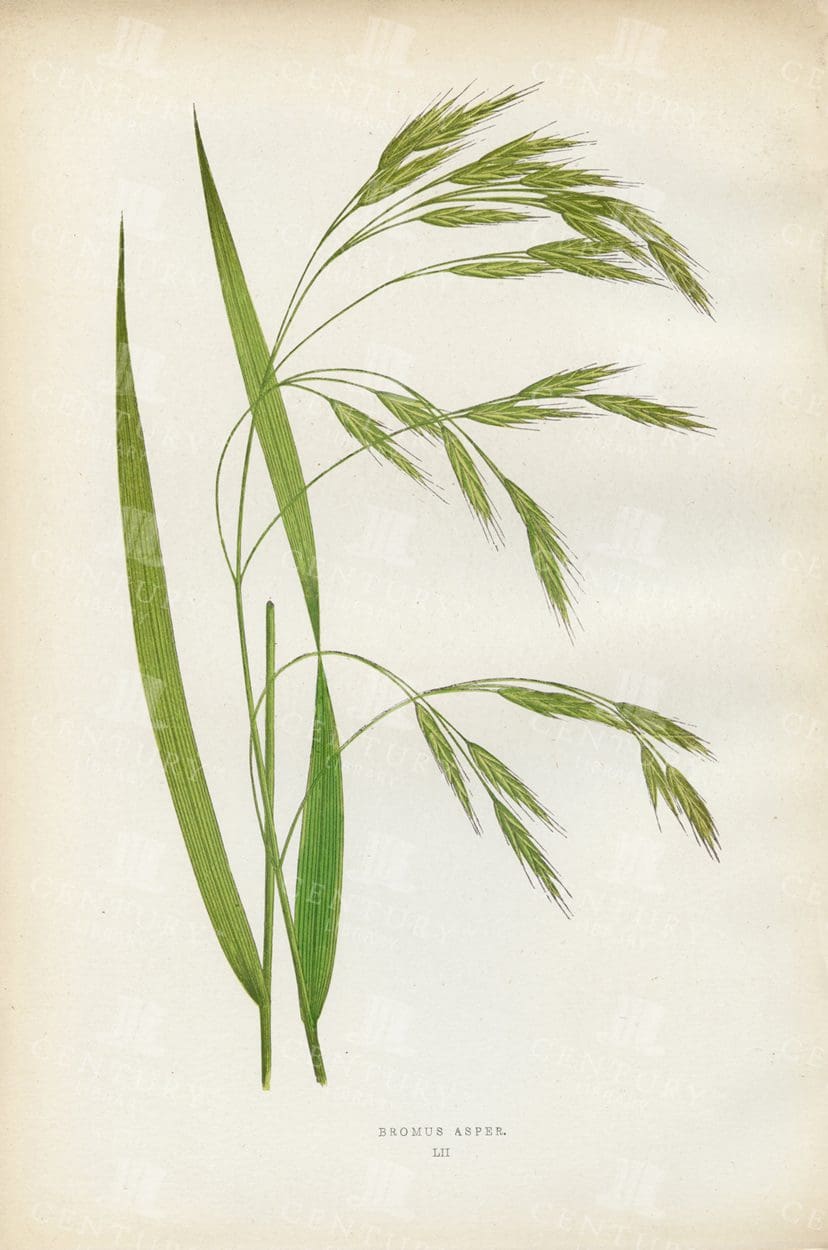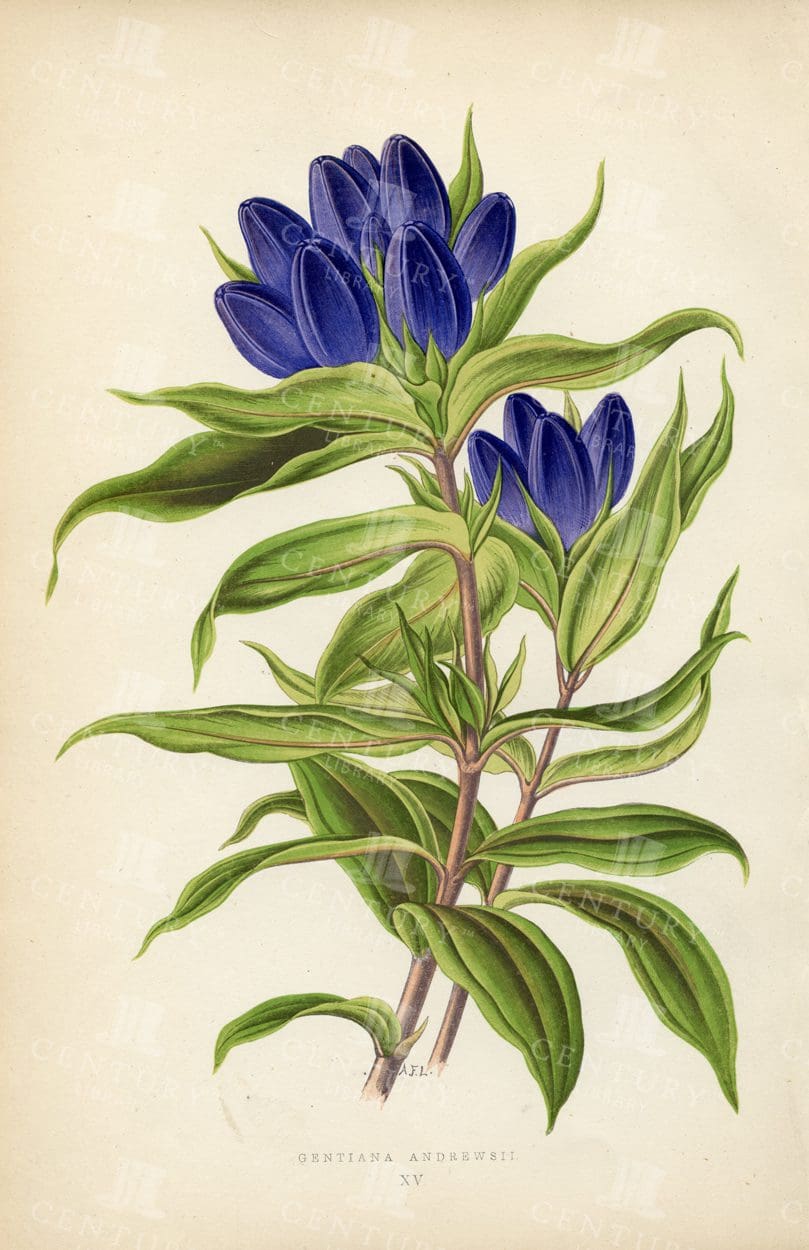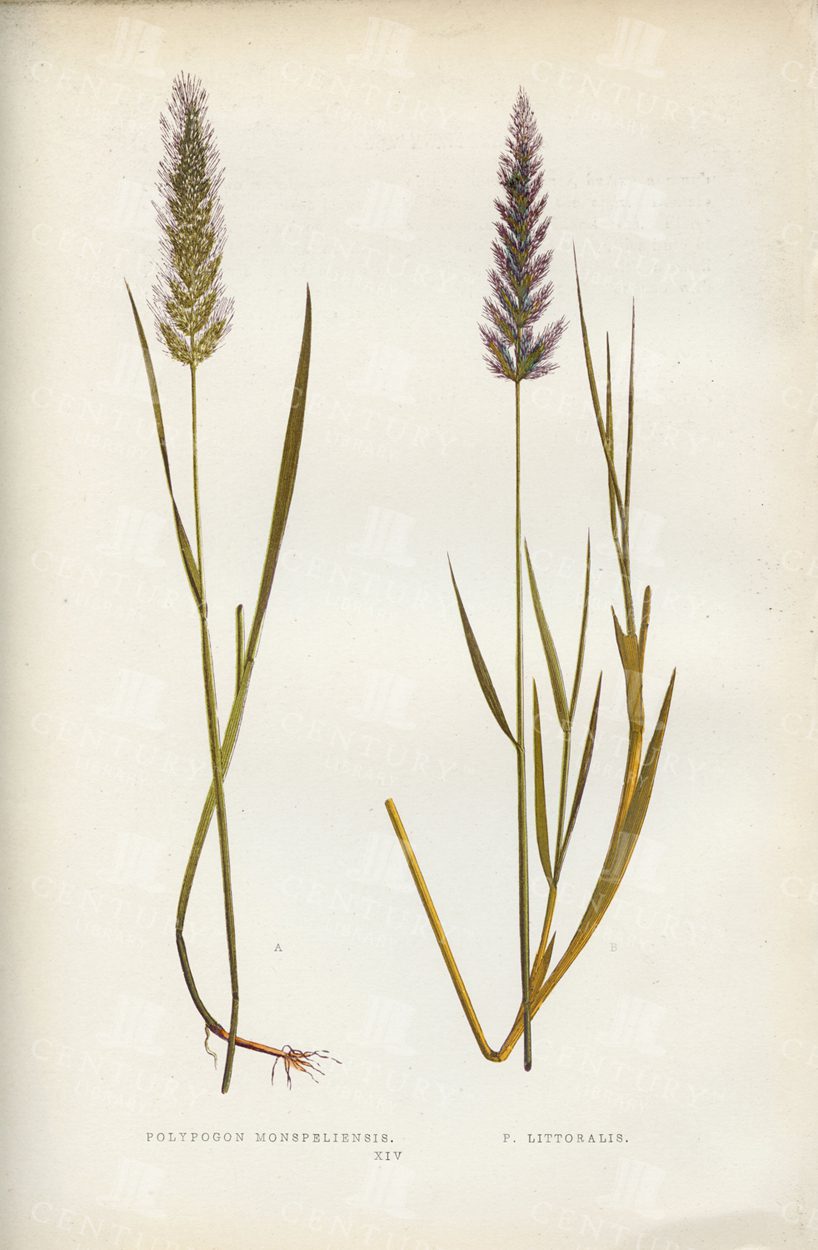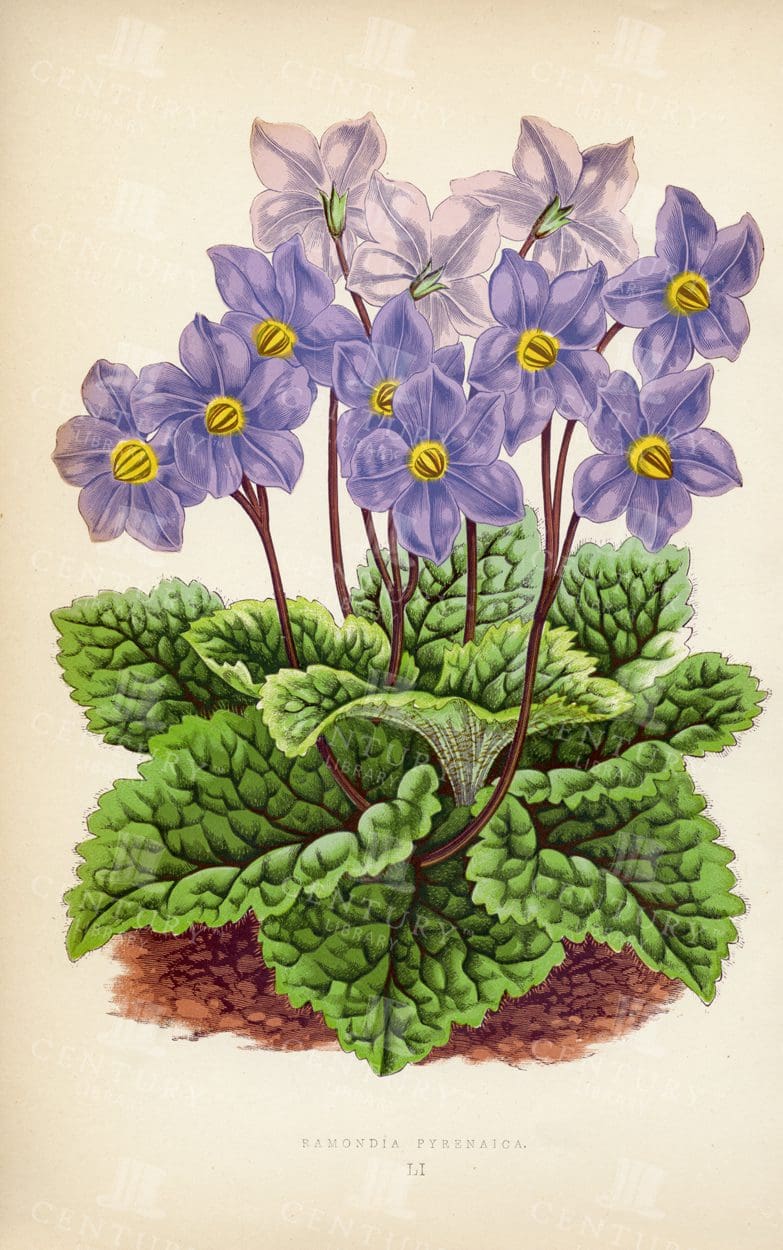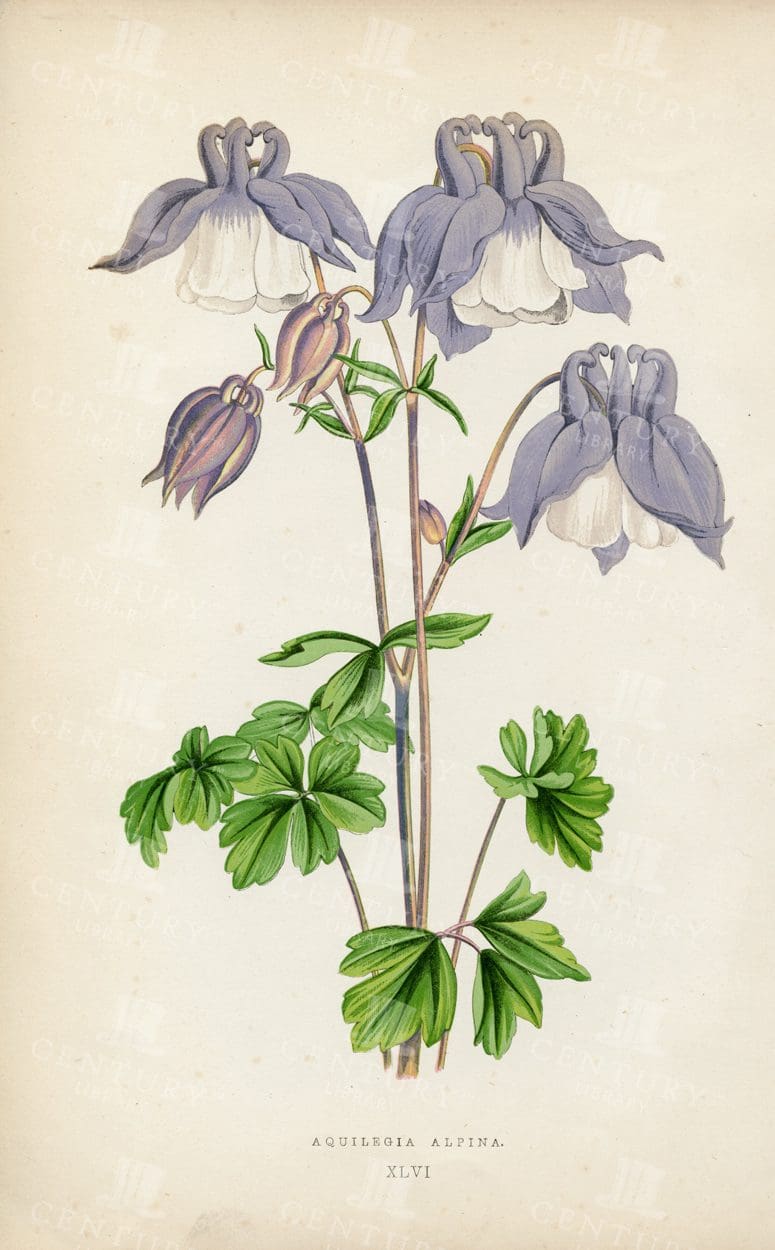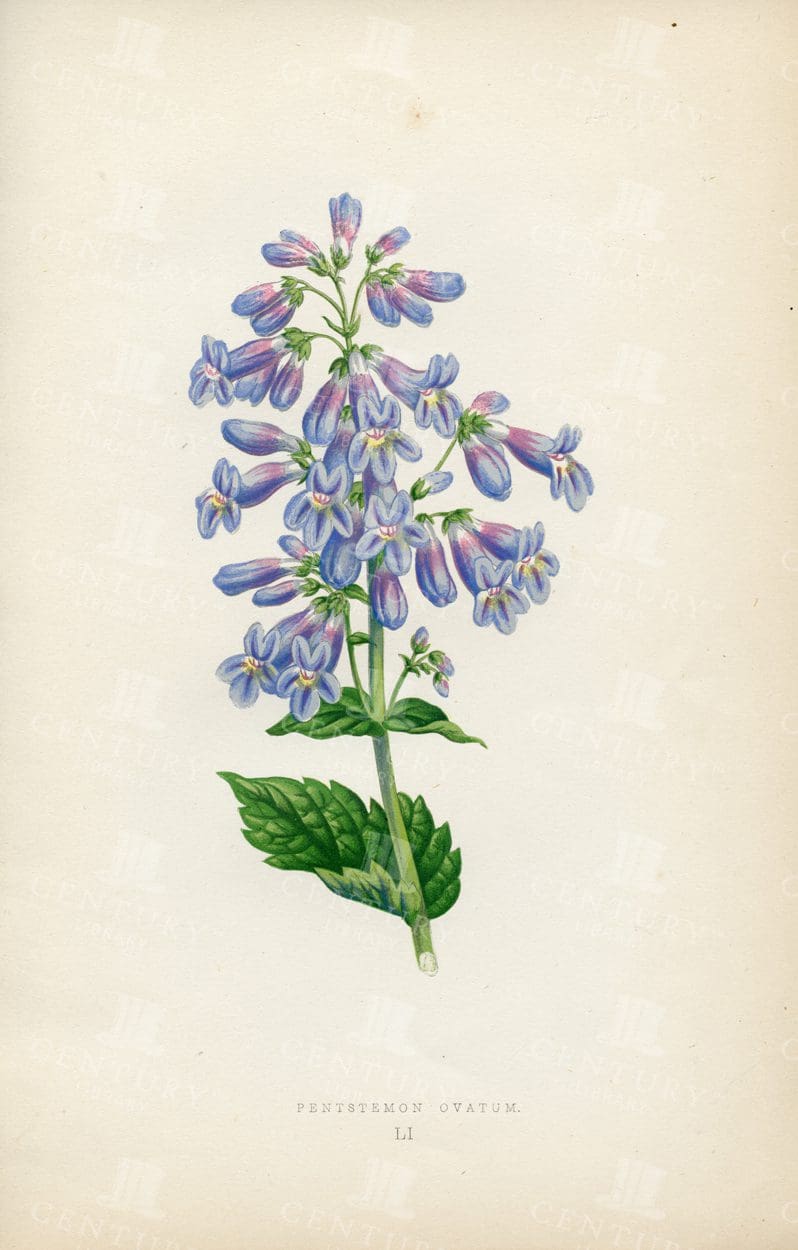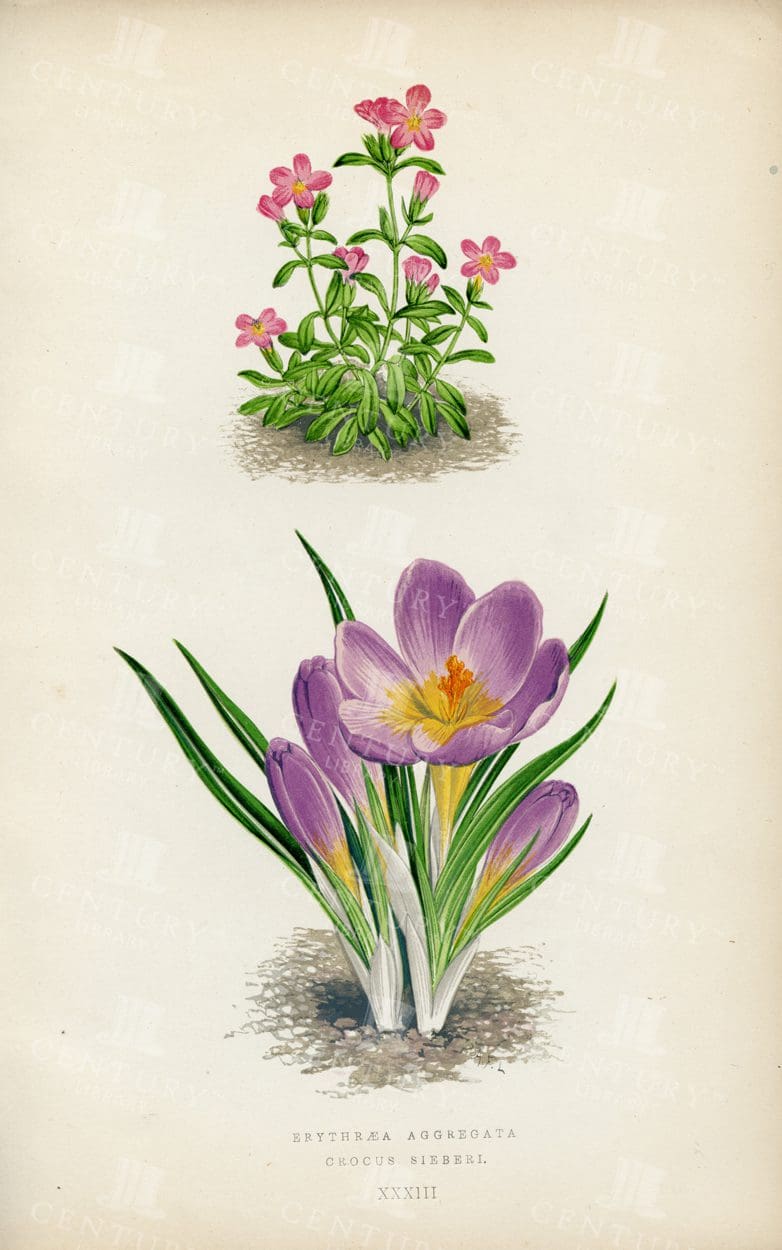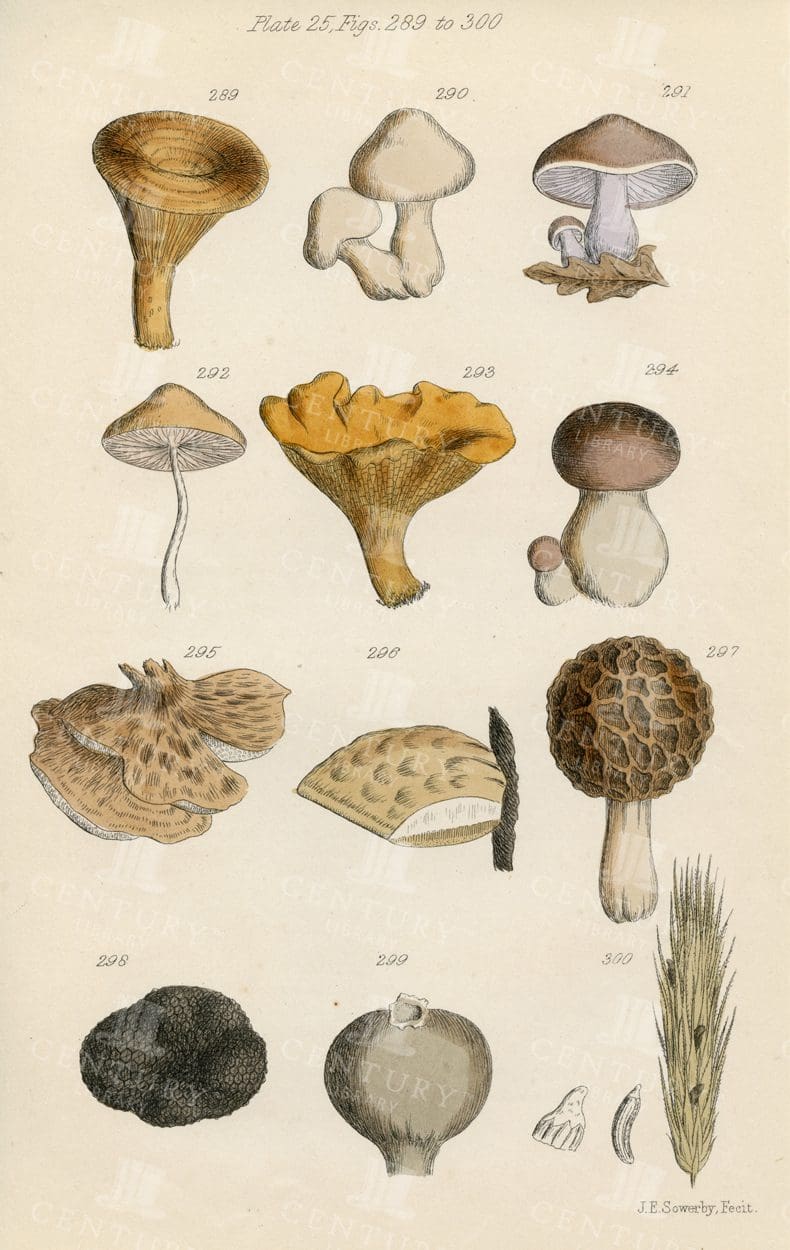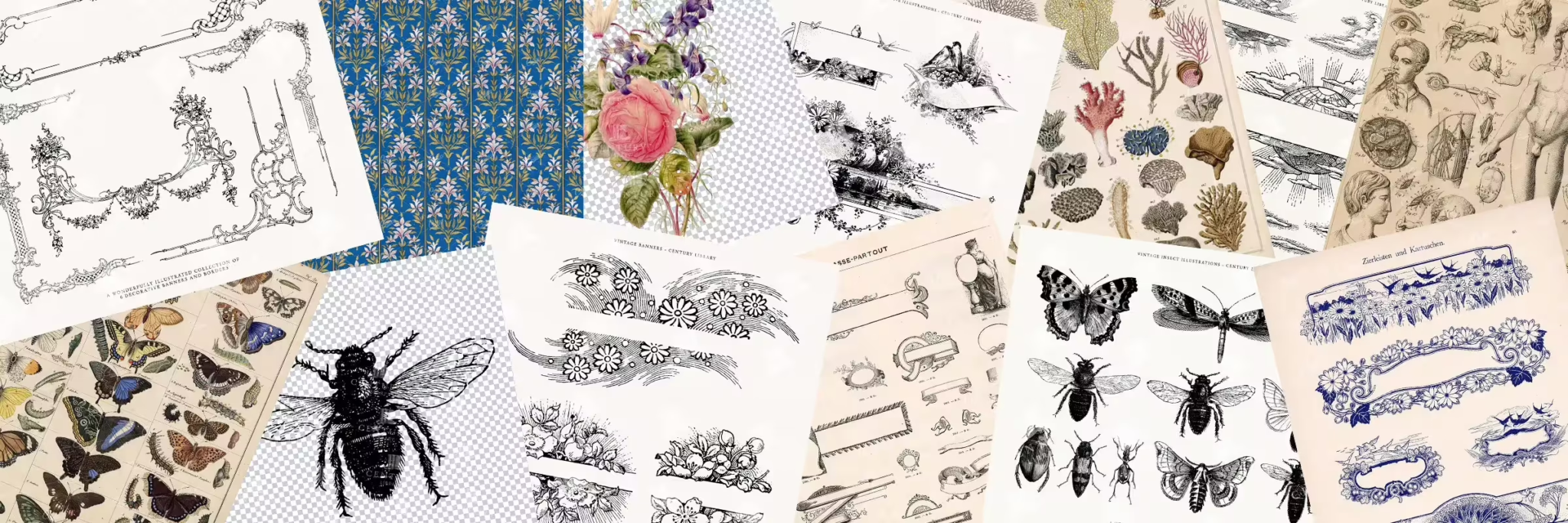


Aster Flowers Lineart Pack – SVG, EPS, and PNG
You're looking at a wonderfully restored set of Aster Floral line art illustrations. Each botanical image was extracted from its original background and converted to the following image formats: SVG (vector), EPS (vector), and, of course, PNG (300dpi raster image with transparent background). Perfect for stationery design, print, invitation design, general graphic design projects and so much more.
- Image Type(s): EPS, SVG, PNG
Related Images
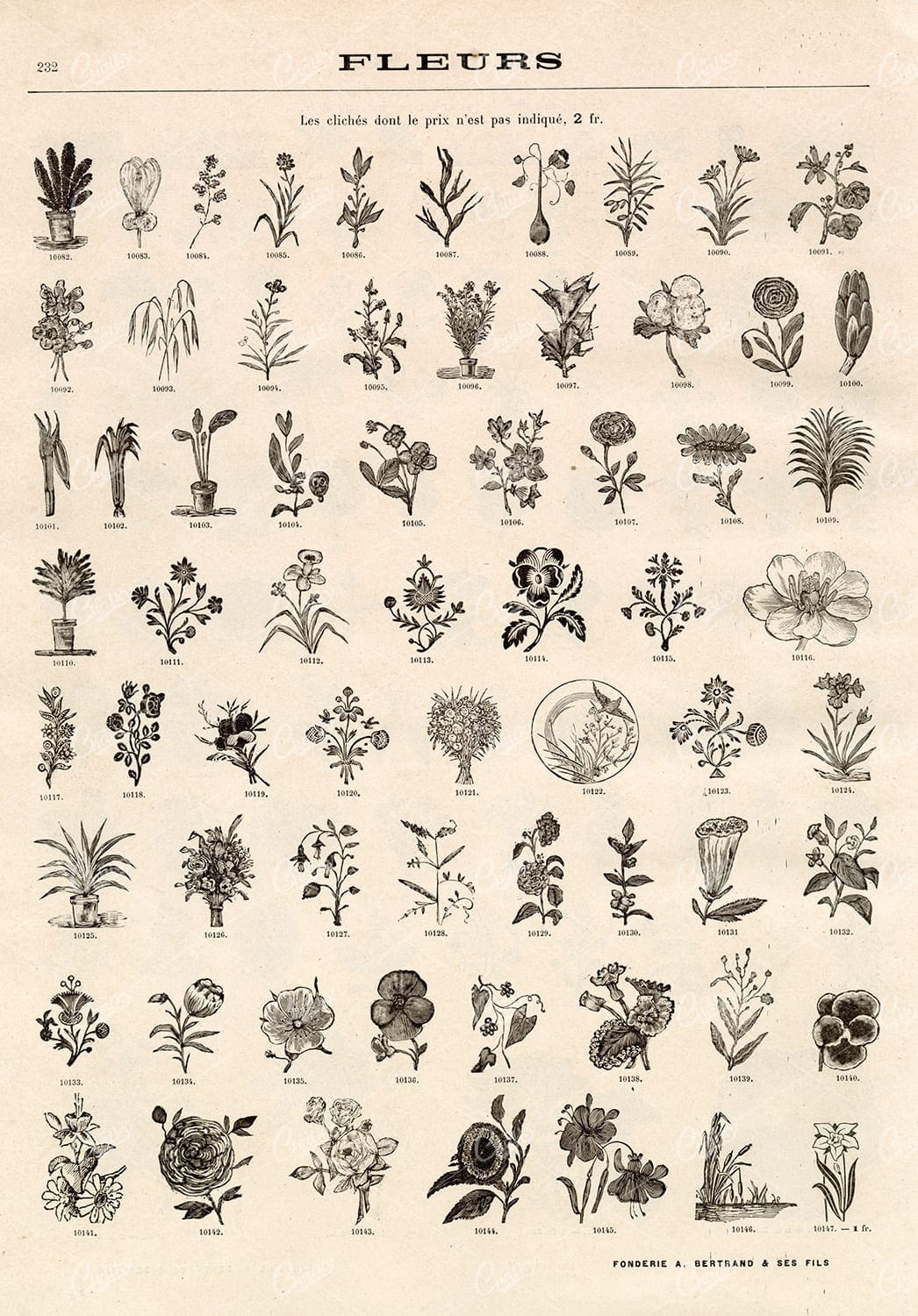

BOTANICAL – A Miscellaneous Selection of Vintage Flower Illustrations
The type foundry and print shop of old would create books, like the one this image was discovered within, to help customers and clients with their design choices. Naturally, these books were jam packed with useful illustrative elements that could be combined to create a final piece. Today, these books are extremely difficult to get a hold of. Especially those that were published in the late 1800s. They were not mainstream publications, they simply served as 'catalogs' and thus were only produced in small numbers. Fortunately, we were introduced to a collector who had precisely what we had been searching for for so long. After some costly negotiations, we're very excited to be able to share the wonderful gems within.
- License Info
- Resolution: 9097 x 12799
- Year of Print: Late 1800s
- Artist: A Bertrand
From this collection
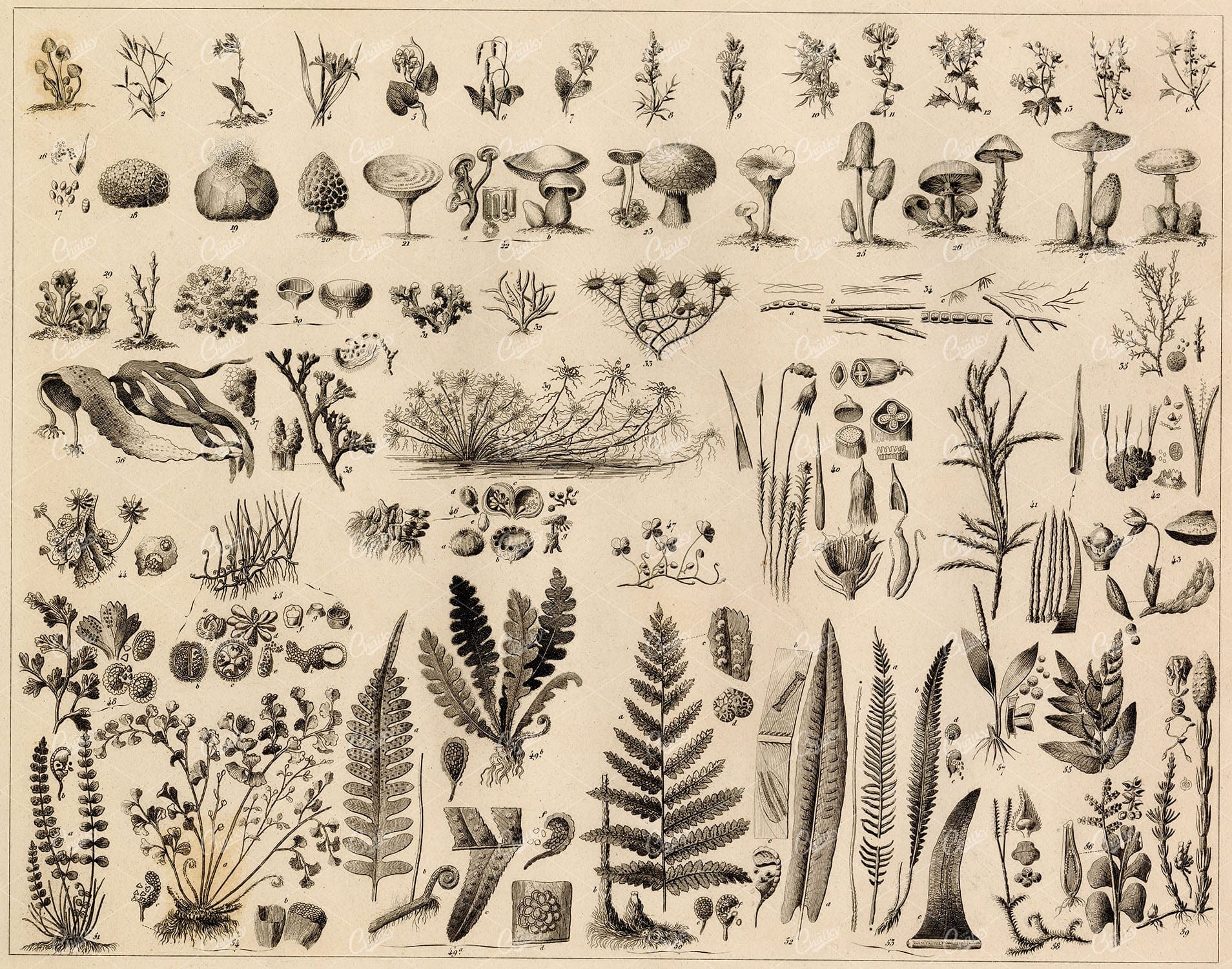

ANTIQUE Botanical Print – Variety of Botany Illustrations – 1851 Print
You’re looking at a well preserved original plate from Johann Georg Heck's “Iconographic Encyclopedia of Sciences, Literature and Art” published in 1851 by Rudolphe Garrigue in New York. We were extremely fortunate to acquire the full collection of illustrative prints from the series, which after many months of looking, proved to be very difficult!
- License Info
- Resolution: 9202 x 7236 300dpi
- Year of Print: 1851
- Artist: Johann Georg Heck
From this collection


BOTANICAL – A Miscellaneous Selection of Vintage Flower Illustrations
The type foundry and print shop of old would create books, like the one this image was discovered within, to help customers and clients with their design choices. Naturally, these books were jam packed with useful illustrative elements that could be combined to create a final piece. Today, these books are extremely difficult to get a hold of. Especially those that were published in the late 1800s. They were not mainstream publications, they simply served as 'catalogs' and thus were only produced in small numbers. Fortunately, we were introduced to a collector who had precisely what we had been searching for for so long. After some costly negotiations, we're very excited to be able to share the wonderful gems within.
- License Info
- Resolution: 8966 x 12765
- Year of Print: Late 1800s
- Artist: A Bertrand
From this collection


Rustic Chinoiserie Style Floral Wreath Illustration – SVG, EPS, and PNG Formats
You're looking at a wonderfully restored Illustration of a chinoiserie-styled floral wreath. The original antique image was extracted from its background and converted to the following image formats: SVG (vector), EPS (vector), and, of course, PNG (300dpi raster image with transparent background).
- Image Type(s): EPS, SVG, PNG
From this collection
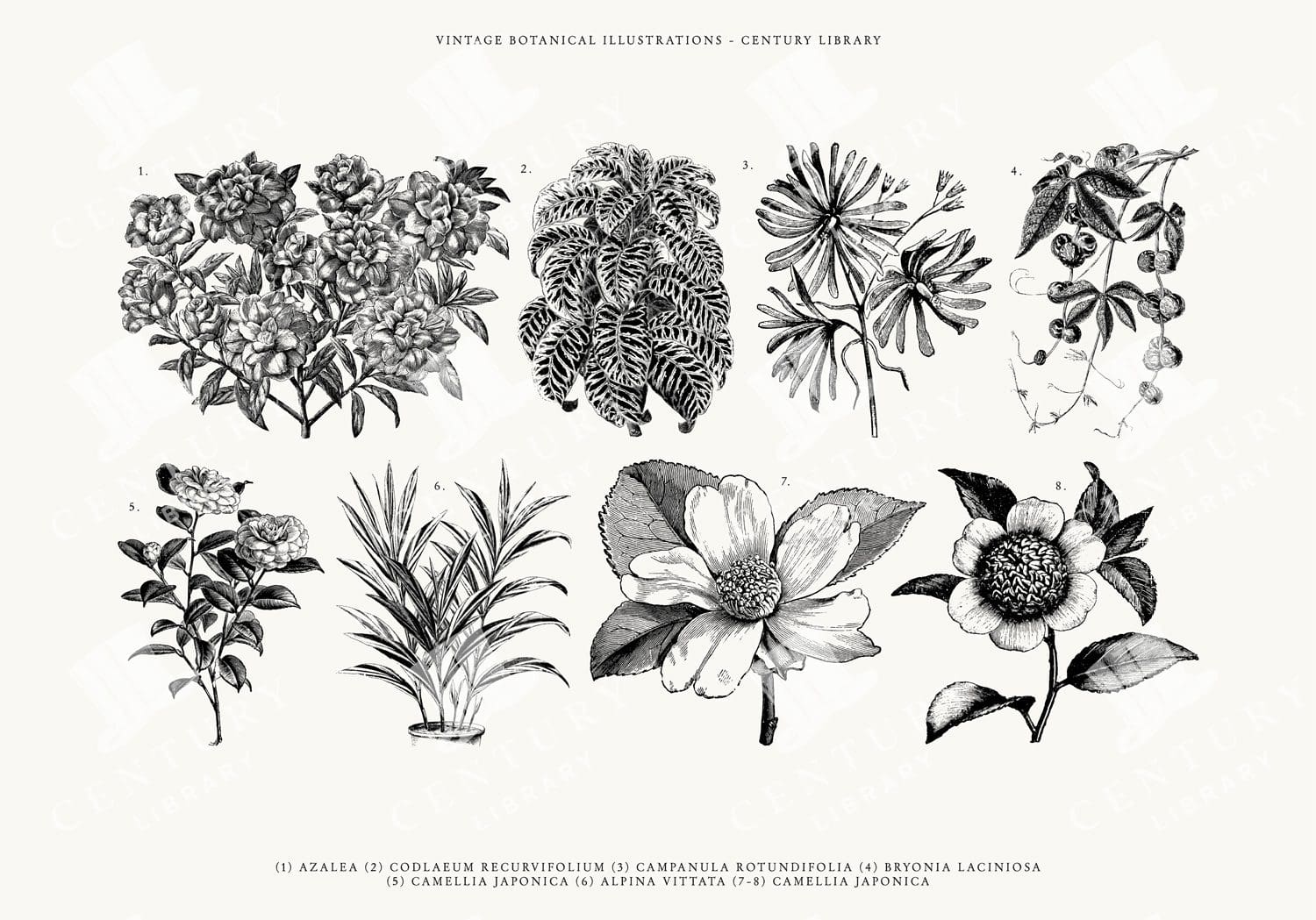

Vintage Botanical Line Art Illustration Pack – SVG, EPS, and PNG Formats
You're looking at a wonderfully restored set of Floral line art illustrations. More specifically, Alpina Vattata, Azalea, Bryonia Laciniosa, Camellia Japonica, Campanula Rotundifolia, and Codleum Recurvifolium. Each botanical line art image was extracted from its original background and converted to the following image formats: SVG (vector), EPS (vector), and, of course, PNG (300dpi raster image with transparent background).
- Image Type(s): EPS, SVG, PNG
Related Images
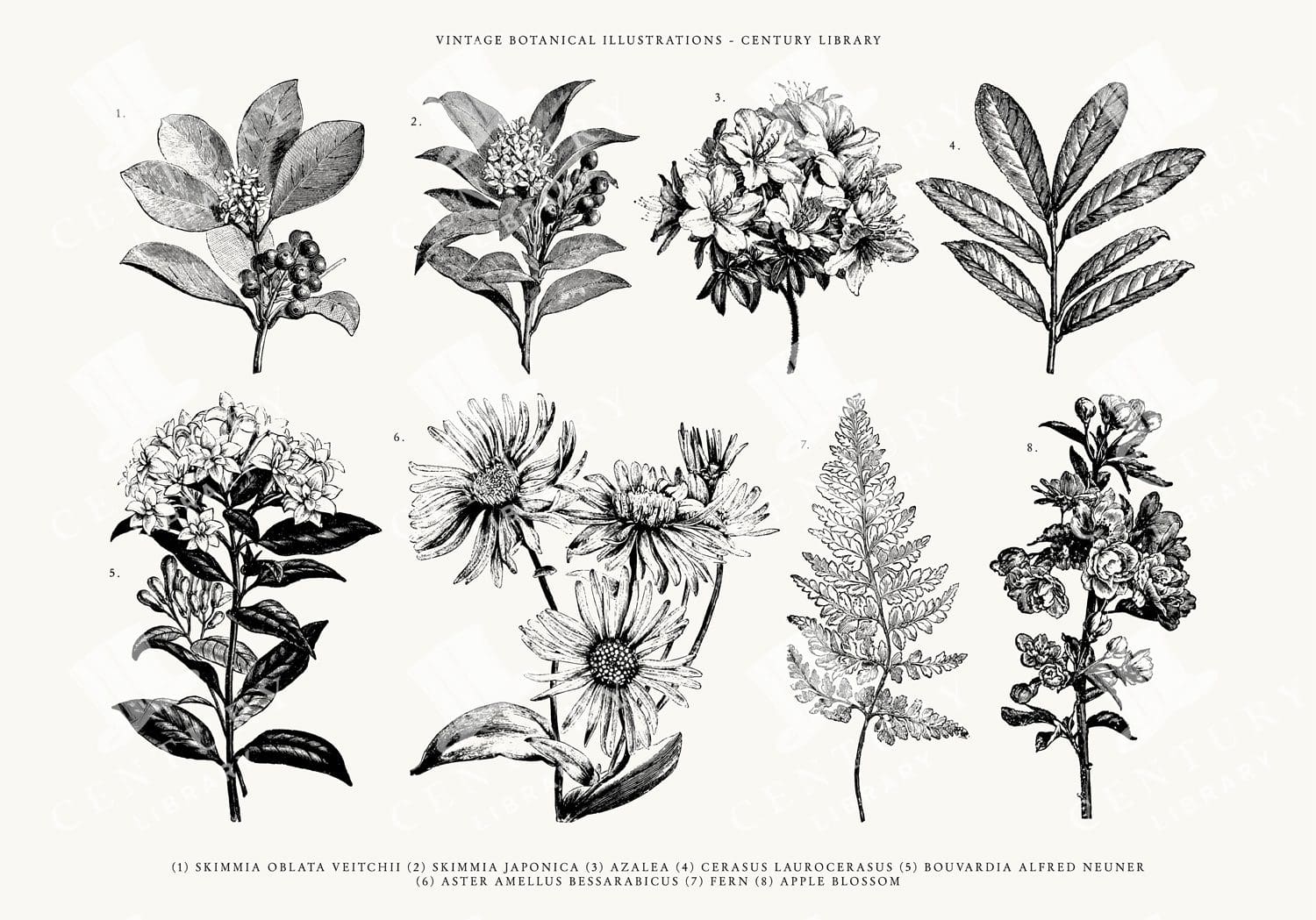

Antique Engraved Flowers and Plants Lineart Pack – SVG, EPS, and PNG Formats
You're looking at a wonderfully restored set of Floral line art illustrations. More specifically, an Apple Blossom, Aster Amellus Bessarabicus, Azalea, Bouvardia Alfred Neuner, Cerasus Laurocerasus, Fern, Skimmia Japonica, and Skimmia Oblata Veitchii. Each botanical line art image was extracted from its original background and converted to the following image formats: SVG (vector), EPS (vector), and, of course, PNG (300dpi raster image with transparent background).
- Image Type(s): EPS, SVG, PNG
Related Images


BOTANICAL – A Miscellaneous Selection of Vintage Flower Illustrations
The type foundry and print shop of old would create books, like the one this image was discovered within, to help customers and clients with their design choices. Naturally, these books were jam packed with useful illustrative elements that could be combined to create a final piece. Today, these books are extremely difficult to get a hold of. Especially those that were published in the late 1800s. They were not mainstream publications, they simply served as 'catalogs' and thus were only produced in small numbers. Fortunately, we were introduced to a collector who had precisely what we had been searching for for so long. After some costly negotiations, we're very excited to be able to share the wonderful gems within.
- License Info
- Resolution: 8920 x 12644
- Year of Print: Late 1800s
- Artist: A Bertrand
From this collection


BOTANICAL – A Miscellaneous Selection of Vintage Flower Illustrations
The type foundry and print shop of old would create books, like the one this image was discovered within, to help customers and clients with their design choices. Naturally, these books were jam packed with useful illustrative elements that could be combined to create a final piece. Today, these books are extremely difficult to get a hold of. Especially those that were published in the late 1800s. They were not mainstream publications, they simply served as 'catalogs' and thus were only produced in small numbers. Fortunately, we were introduced to a collector who had precisely what we had been searching for for so long. After some costly negotiations, we're very excited to be able to share the wonderful gems within.
- License Info
- Resolution: 9099 x 12779
- Year of Print: Late 1800s
- Artist: A Bertrand
From this collection
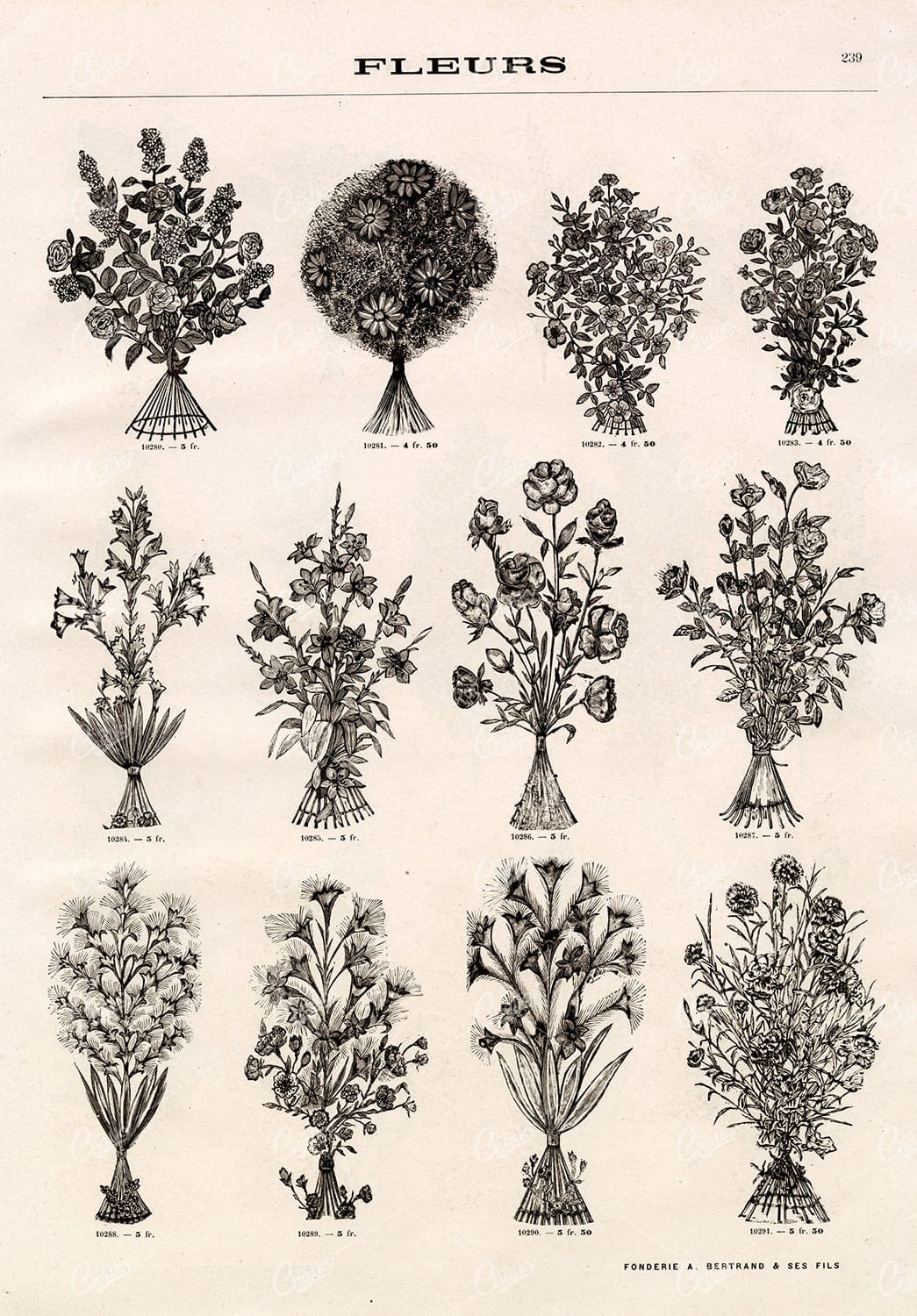

BOTANICAL – A Miscellaneous Selection of Vintage Flower Illustrations
The type foundry and print shop of old would create books, like the one this image was discovered within, to help customers and clients with their design choices. Naturally, these books were jam packed with useful illustrative elements that could be combined to create a final piece. Today, these books are extremely difficult to get a hold of. Especially those that were published in the late 1800s. They were not mainstream publications, they simply served as 'catalogs' and thus were only produced in small numbers. Fortunately, we were introduced to a collector who had precisely what we had been searching for for so long. After some costly negotiations, we're very excited to be able to share the wonderful gems within.
- License Info
- Resolution: 9065 x 12836
- Year of Print: Late 1800s
- Artist: A Bertrand
From this collection
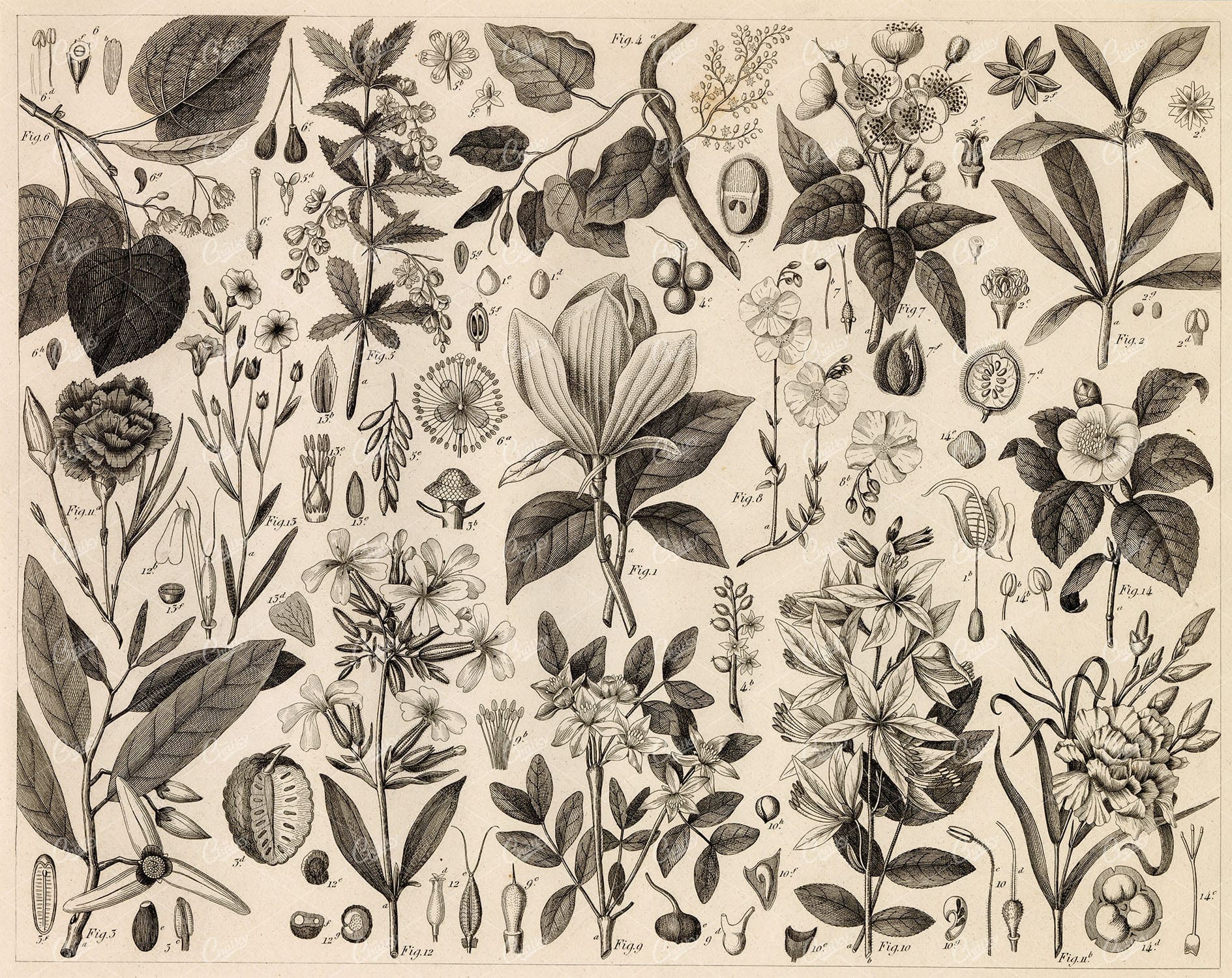

ANTIQUE Botanical Print – Variety of Botany Illustrations – 1851 Print
You’re looking at a well preserved original plate from Johann Georg Heck's “Iconographic Encyclopedia of Sciences, Literature and Art” published in 1851 by Rudolphe Garrigue in New York. We were extremely fortunate to acquire the full collection of illustrative prints from the series, which after many months of looking, proved to be very difficult!
- License Info
- Resolution: 9182 x 7291 300dpi
- Year of Print: 1851
- Artist: Johann Georg Heck
From this collection
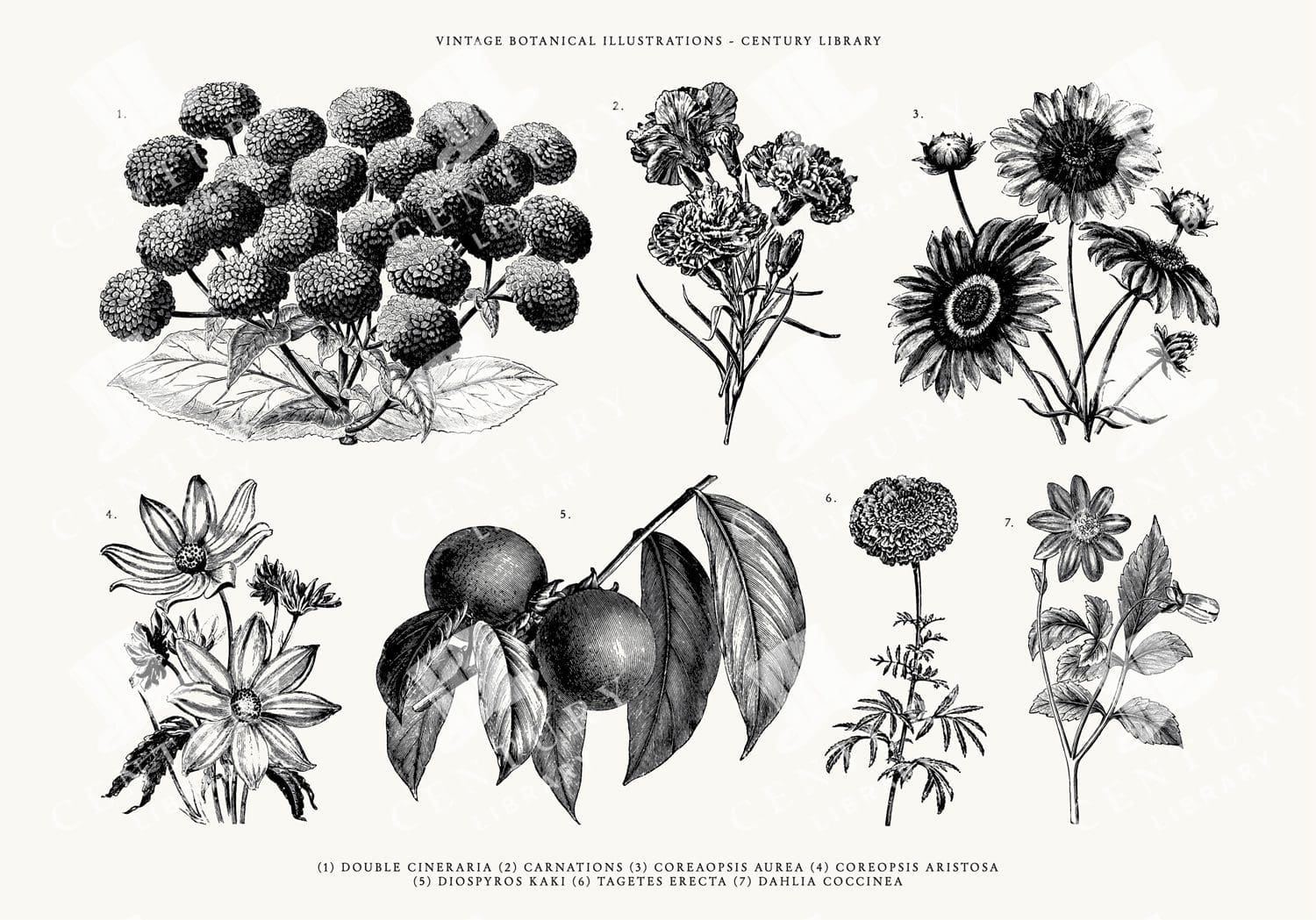

Botanical Clipart Pack – SVG, EPS, and PNG Formats
You're looking at a wonderfully restored set of Floral line art illustrations. Each botanical line art image was extracted from its original background and converted to the following image formats: SVG (vector), EPS (vector), and, of course, PNG (300dpi raster image with transparent background).
- Image Type(s): EPS, SVG, PNG
Related Images
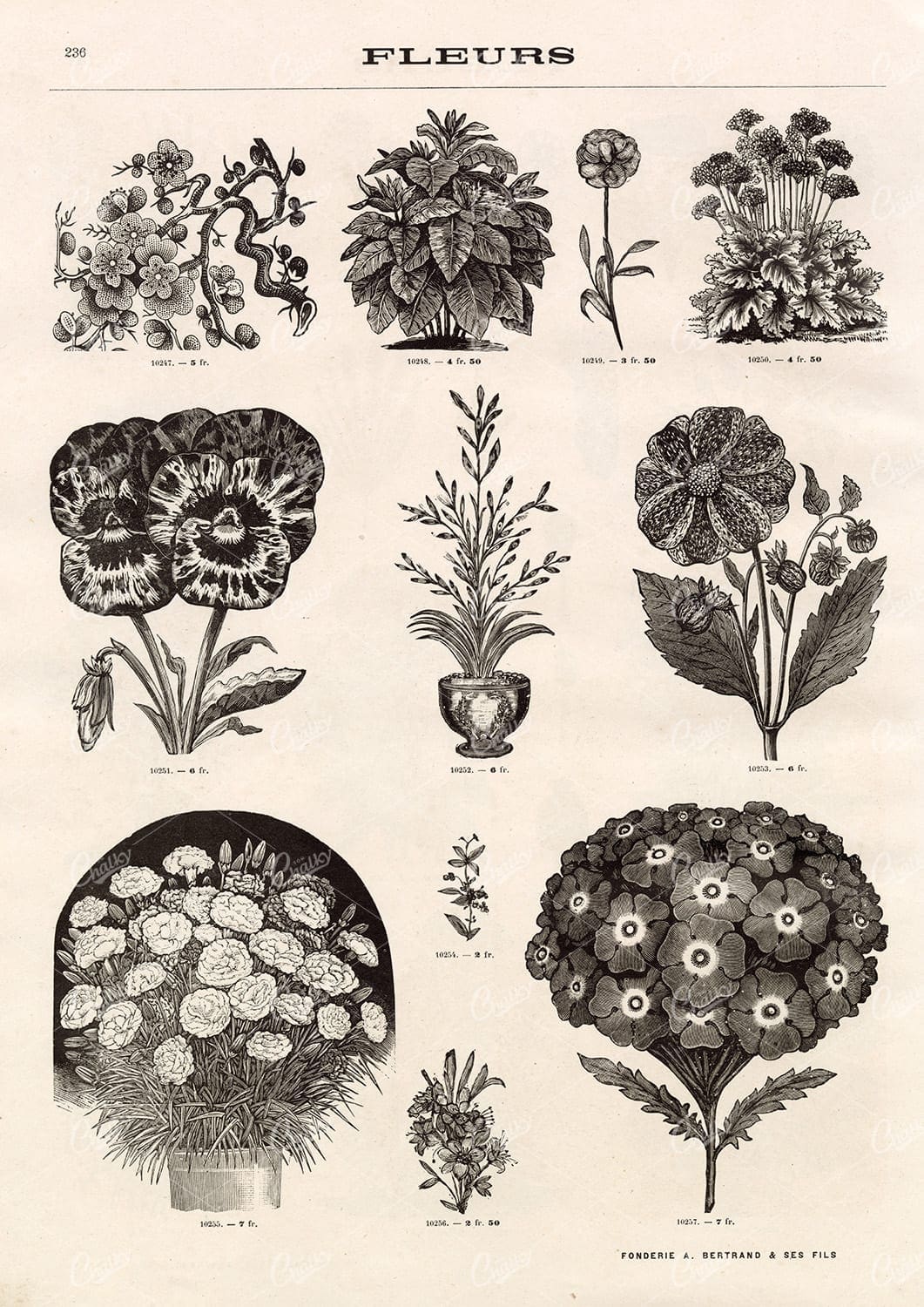

BOTANICAL – A Miscellaneous Selection of Vintage Flower Illustrations
The type foundry and print shop of old would create books, like the one this image was discovered within, to help customers and clients with their design choices. Naturally, these books were jam packed with useful illustrative elements that could be combined to create a final piece. Today, these books are extremely difficult to get a hold of. Especially those that were published in the late 1800s. They were not mainstream publications, they simply served as 'catalogs' and thus were only produced in small numbers. Fortunately, we were introduced to a collector who had precisely what we had been searching for for so long. After some costly negotiations, we're very excited to be able to share the wonderful gems within.
- License Info
- Resolution: 8949 x 12592
- Year of Print: Late 1800s
- Artist: A Bertrand
From this collection


Floral Line Art Illustration Pack – SVG, EPS, and PNG Formats
You're looking at a wonderfully restored set of Floral line art illustrations. More specifically, an Ardisia Crenulata, Chenopodium Ambrosoides, Chinensis Plenissimus, Darwinia Macrostegia, Datura Meteloides, and a White Chinese Cherry Blossom. Each botanical line art image was extracted from its original background and converted to the following image formats: SVG (vector), EPS (vector), and, of course, PNG (300dpi raster image with transparent background).
- Image Type(s): EPS, SVG, PNG
Related Images


Botanical Line Art Pack – SVG, EPS, and PNG Formats
You're looking at a wonderfully restored set of Floral line art illustrations. Each botanical line art image was extracted from its original background and converted to the following image formats: SVG (vector), EPS (vector), and, of course, PNG (300dpi raster image with transparent background).
- Image Type(s): EPS, SVG, PNG
Related Images
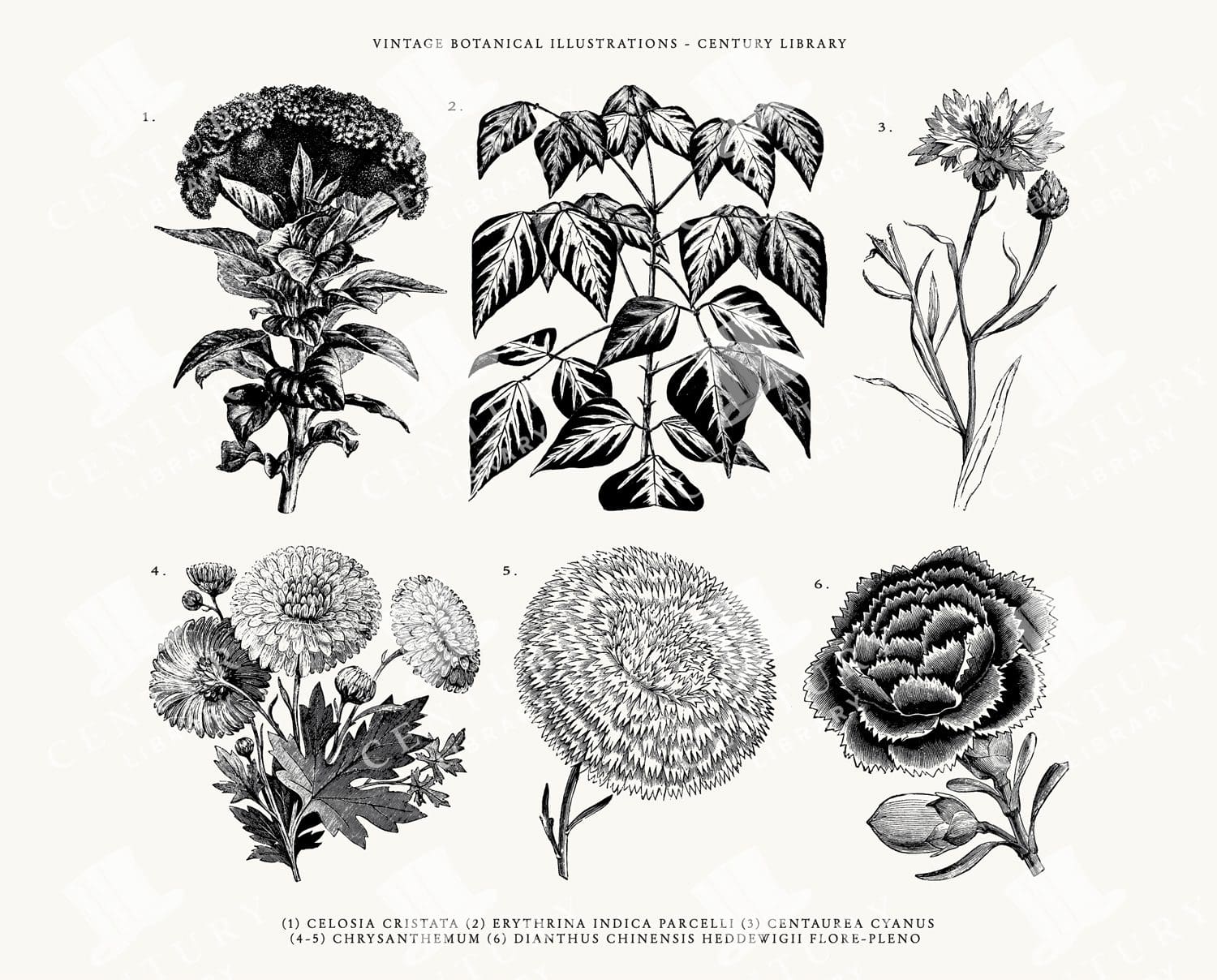

Botanical Flowers and Plant Line Art Illustration Pack – SVG, EPS, and PNG Formats
You're looking at a wonderfully restored set of Floral line art illustrations. More specifically, a Celosia Cristata, Centaurea Cyanus, Chrysanthemum Bunch, Chrysanthemum, Dianthus Chinensis Heddewigii, and Erythrina Indica Parcelli. Each botanical line art image was extracted from its original background and converted to the following image formats: SVG (vector), EPS (vector), and, of course, PNG (300dpi raster image with transparent background).
- Image Type(s): EPS, SVG, PNG
Related Images


Vintage Engraved Flowers and Plants Clipart Pack – SVG, EPS, and PNG Formats
You're looking at a wonderfully restored trio of Wildflower line art illustrations. More specifically, a pittosporum tobira, piper porphyrophyllum, prunus pensylvanica, pteris quadriauria fern, pyrethrum frutescens, Pyrus floribunda and malingo toringo. Each botanical line art image was extracted from its original background and converted to the following image formats: SVG (vector), EPS (vector), and, of course, PNG (300dpi raster image with transparent background).
- Image Type(s): EPS, SVG, PNG
Related Images
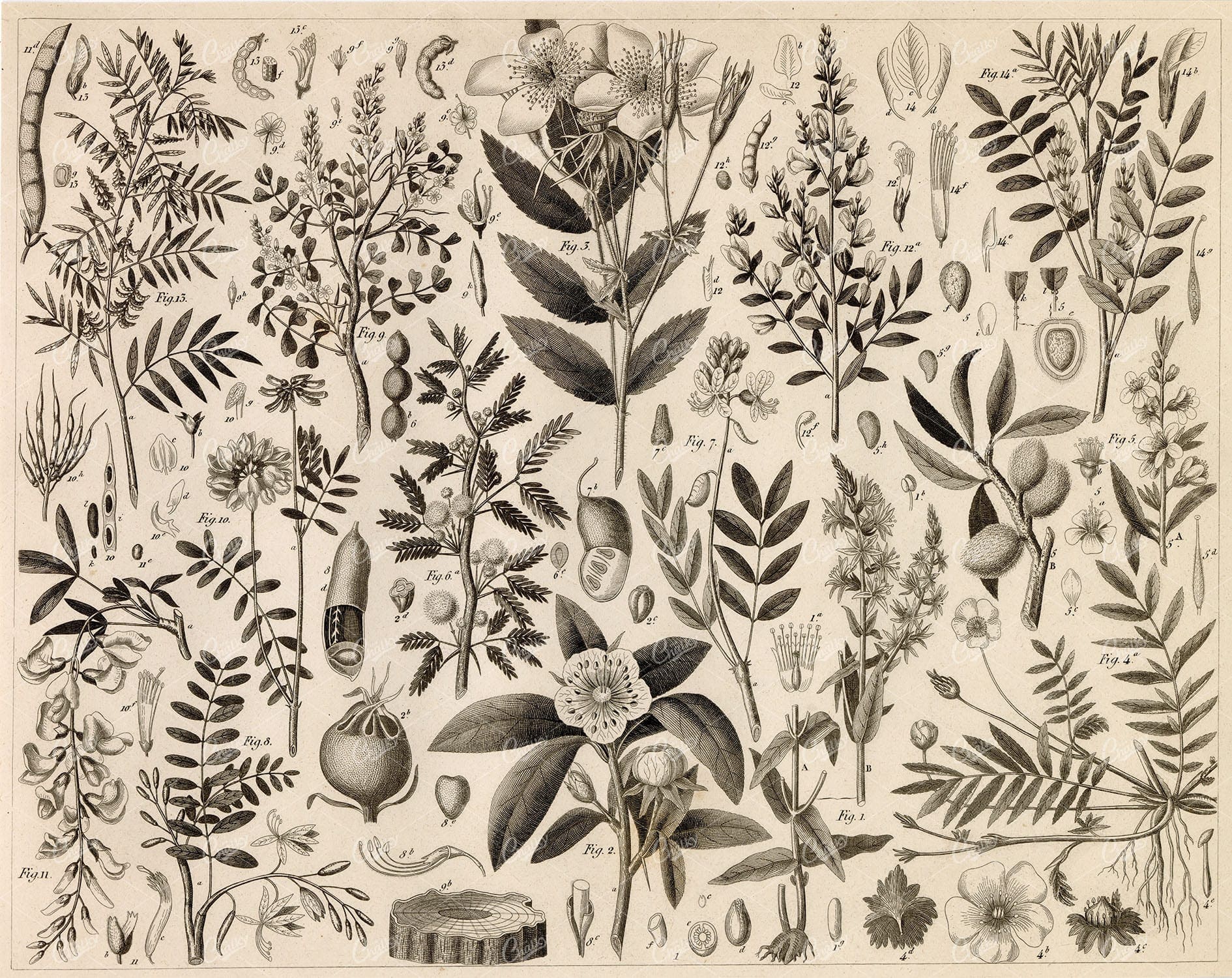

ANTIQUE Botanical Print – Variety of Botany Illustrations – 1851 Print
You’re looking at a well preserved original plate from Johann Georg Heck's “Iconographic Encyclopedia of Sciences, Literature and Art” published in 1851 by Rudolphe Garrigue in New York. We were extremely fortunate to acquire the full collection of illustrative prints from the series, which after many months of looking, proved to be very difficult!
- License Info
- Resolution: 9191 x 7294 300dpi
- Year of Print: 1851
- Artist: Johann Georg Heck
From this collection


BOTANICAL – A Miscellaneous Selection of Vintage Flower Illustrations
The type foundry and print shop of old would create books, like the one this image was discovered within, to help customers and clients with their design choices. Naturally, these books were jam packed with useful illustrative elements that could be combined to create a final piece. Today, these books are extremely difficult to get a hold of. Especially those that were published in the late 1800s. They were not mainstream publications, they simply served as 'catalogs' and thus were only produced in small numbers. Fortunately, we were introduced to a collector who had precisely what we had been searching for for so long. After some costly negotiations, we're very excited to be able to share the wonderful gems within.
- License Info
- Resolution: 8795 x 12683
- Year of Print: Late 1800s
- Artist: A Bertrand
From this collection
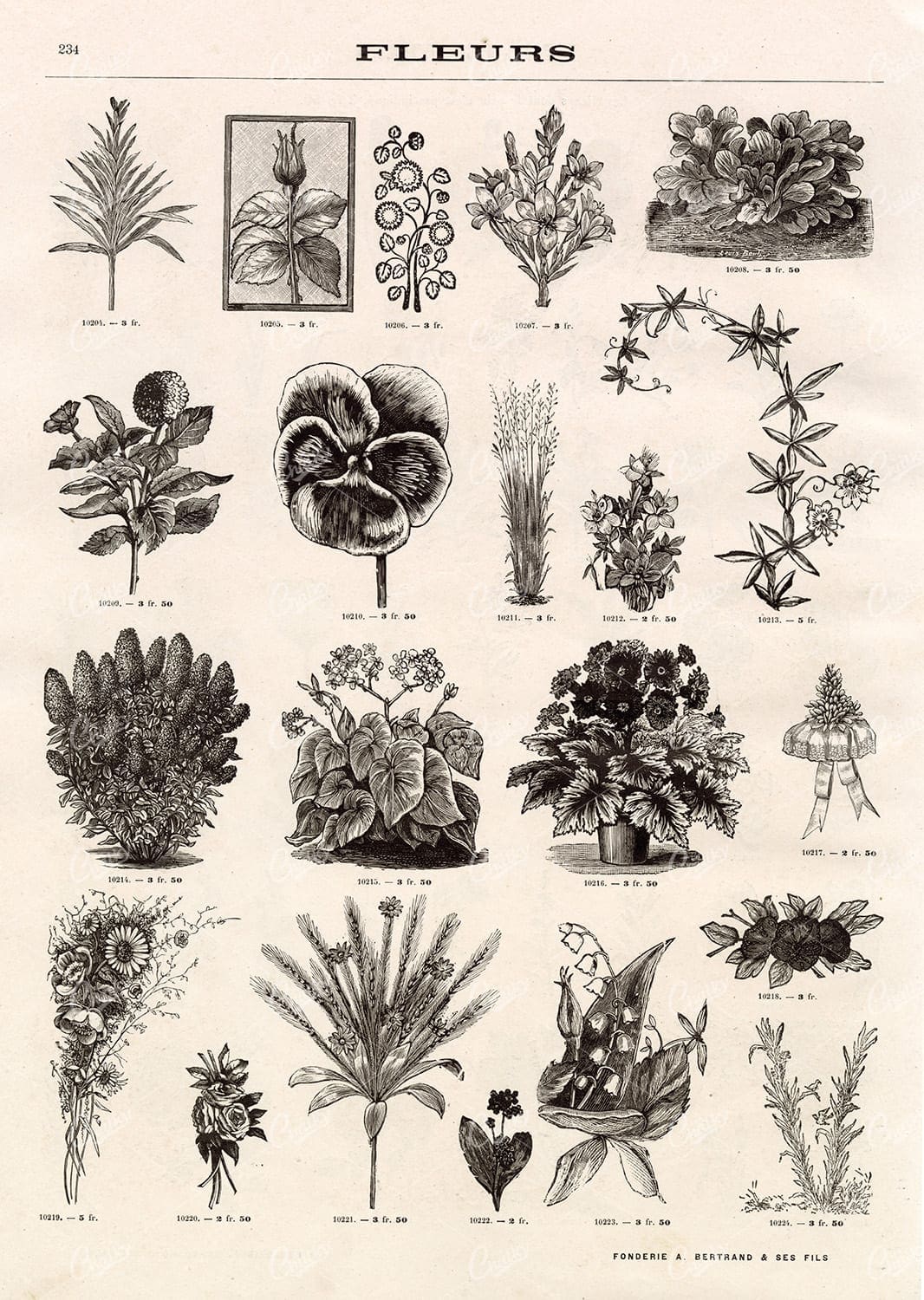

BOTANICAL – A Miscellaneous Selection of Vintage Flower Illustrations
The type foundry and print shop of old would create books, like the one this image was discovered within, to help customers and clients with their design choices. Naturally, these books were jam packed with useful illustrative elements that could be combined to create a final piece. Today, these books are extremely difficult to get a hold of. Especially those that were published in the late 1800s. They were not mainstream publications, they simply served as 'catalogs' and thus were only produced in small numbers. Fortunately, we were introduced to a collector who had precisely what we had been searching for for so long. After some costly negotiations, we're very excited to be able to share the wonderful gems within.
- License Info
- Resolution: 8858 x 12697
- Year of Print: Late 1800s
- Artist: A Bertrand
From this collection
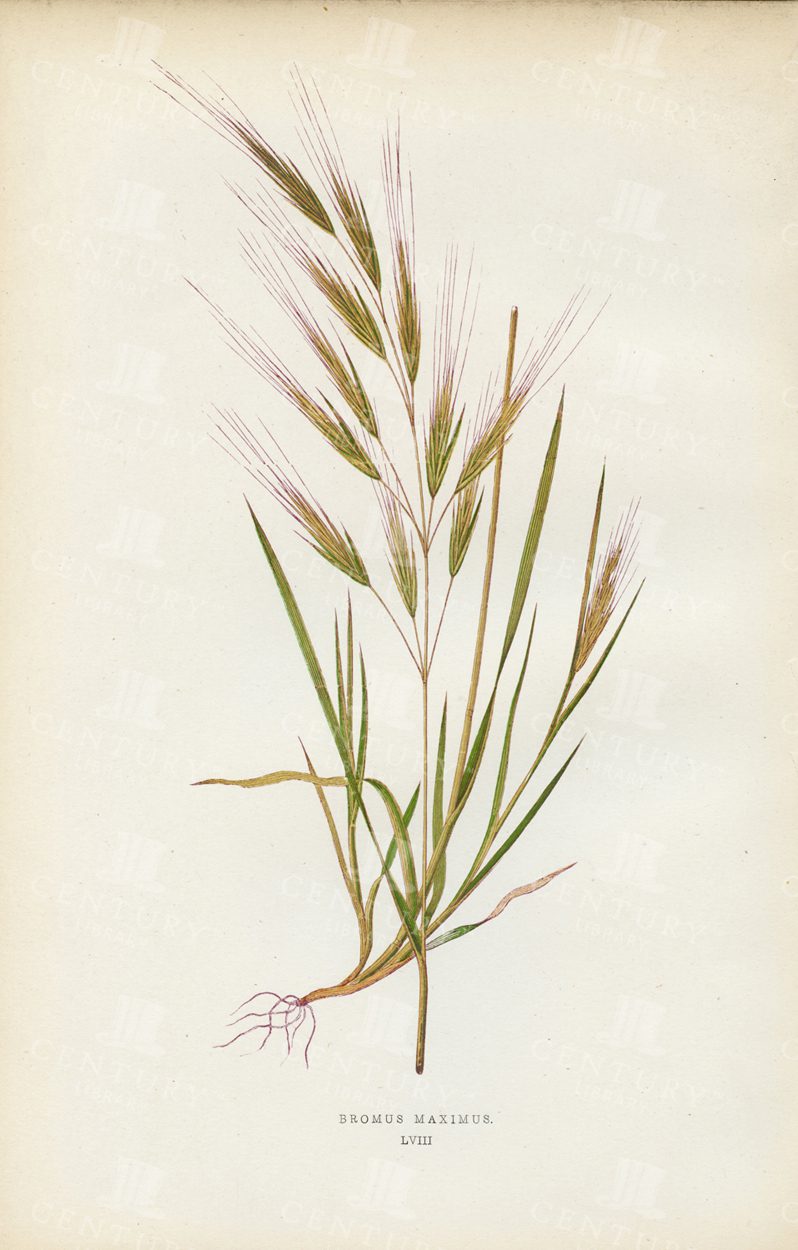

BROMUS MAXIMUS – Vintage 1891 Botanical Print of British Grasses
- License Info
- Resolution: 5686px x 8911px
- Year of Print: 1891
- Artist: Edward Joseph Lowe
From this collection
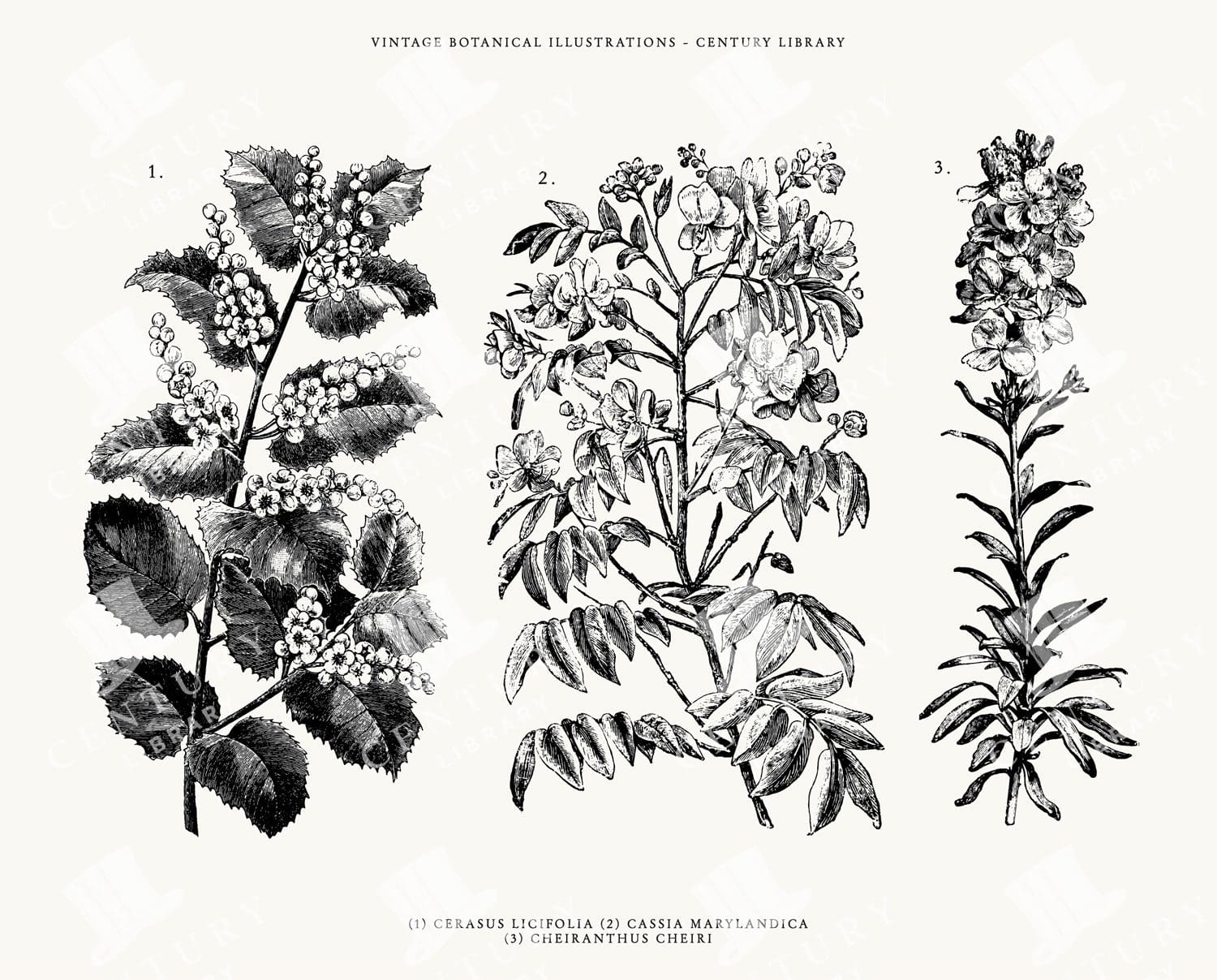

Vintage Botanical Plant and Flower Line Art Illustration Pack – SVG, EPS, and PNG Formats
You're looking at a wonderfully restored set of Floral line art illustrations. More specifically, Cassia Marylandica, Cerasus Licifolia, and Cheiranthus Cheiri. Each botanical line art image was extracted from its original background and converted to the following image formats: SVG (vector), EPS (vector), and, of course, PNG (300dpi raster image with transparent background).
- Image Type(s): EPS, SVG, PNG
Related Images


BOTANICAL – A Miscellaneous Selection of Vintage Flower Illustrations
The type foundry and print shop of old would create books, like the one this image was discovered within, to help customers and clients with their design choices. Naturally, these books were jam packed with useful illustrative elements that could be combined to create a final piece. Today, these books are extremely difficult to get a hold of. Especially those that were published in the late 1800s. They were not mainstream publications, they simply served as 'catalogs' and thus were only produced in small numbers. Fortunately, we were introduced to a collector who had precisely what we had been searching for for so long. After some costly negotiations, we're very excited to be able to share the wonderful gems within.
- License Info
- Resolution: 8972 x 12680
- Year of Print: Late 1800s
- Artist: A Bertrand
From this collection
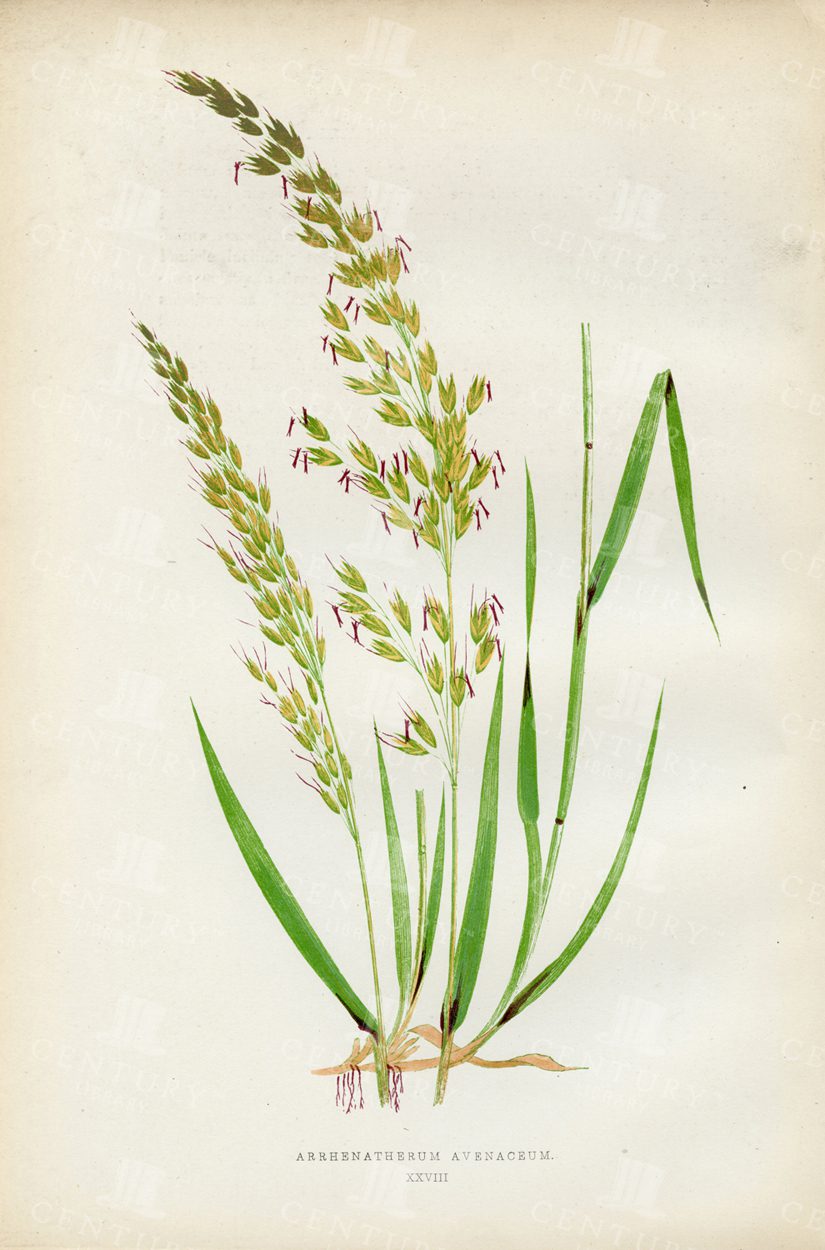

1891 British Grasses Vintage Print – Arrhenatherum Avenaceum
- License Info
- Resolution: 5891px x 8928px
- Year of Print: 1891
- Artist: Edward Joseph Lowe
From this collection
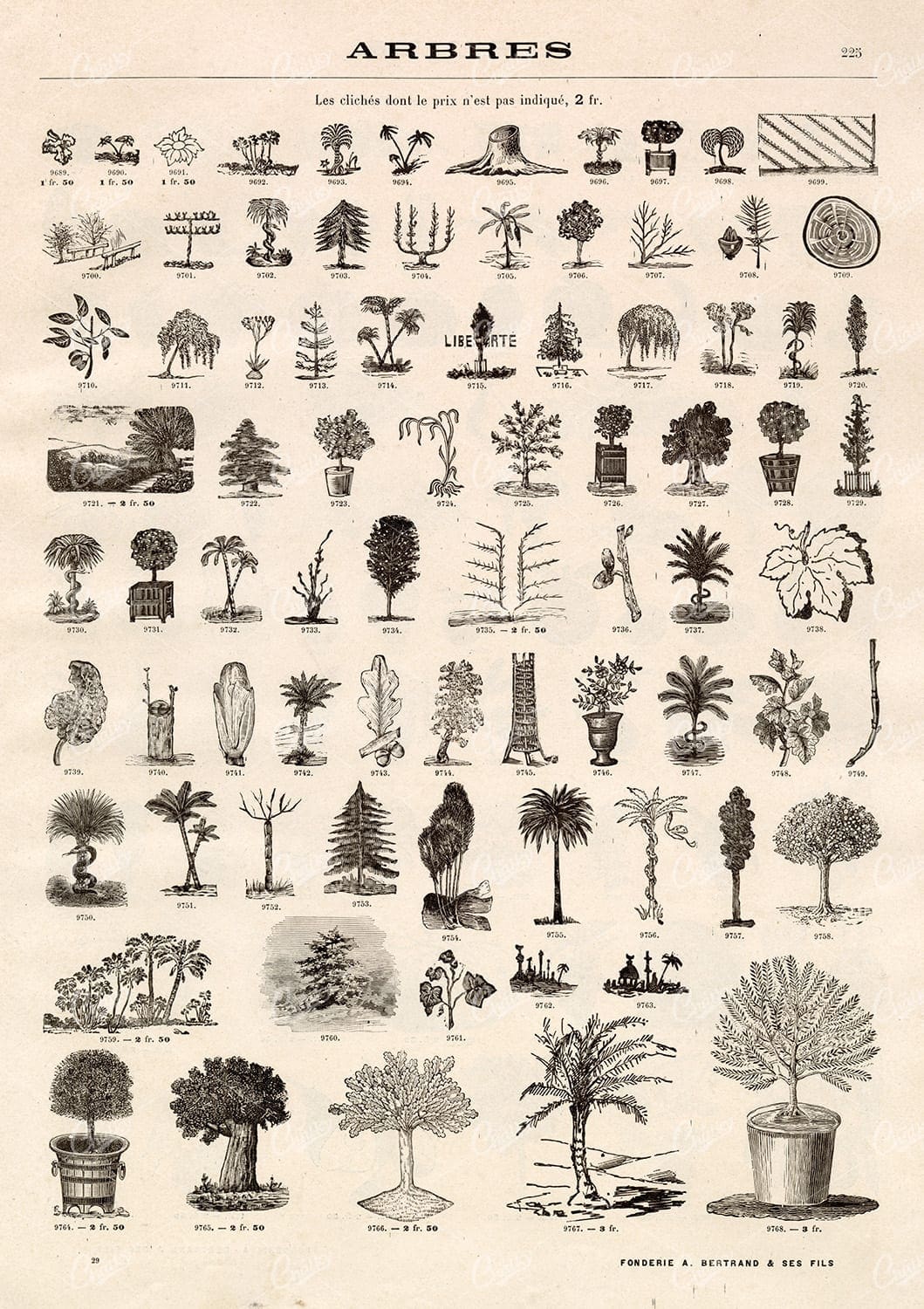

AGRICULTURE – A Miscellaneous Selection of Vintage Tree Illustrations
The type foundry and print shop of old would create books, like the one this image was discovered within, to help customers and clients with their design choices. Naturally, these books were jam packed with useful illustrative elements that could be combined to create a final piece. Today, these books are extremely difficult to get a hold of. Especially those that were published in the late 1800s. They were not mainstream publications, they simply served as 'catalogs' and thus were only produced in small numbers. Fortunately, we were introduced to a collector who had precisely what we had been searching for for so long. After some costly negotiations, we're very excited to be able to share the wonderful gems within.
- License Info
- Resolution: 8918 x 12901
- Year of Print: Late 1800s
- Artist: A Bertrand
From this collection


ANTIQUE Botanical Print – Variety of Botany Illustrations – 1851 Print
You’re looking at a well preserved original plate from Johann Georg Heck's “Iconographic Encyclopedia of Sciences, Literature and Art” published in 1851 by Rudolphe Garrigue in New York. We were extremely fortunate to acquire the full collection of illustrative prints from the series, which after many months of looking, proved to be very difficult!
- License Info
- Resolution: 9190 x 7368 300dpi
- Year of Print: 1851
- Artist: Johann Georg Heck
From this collection
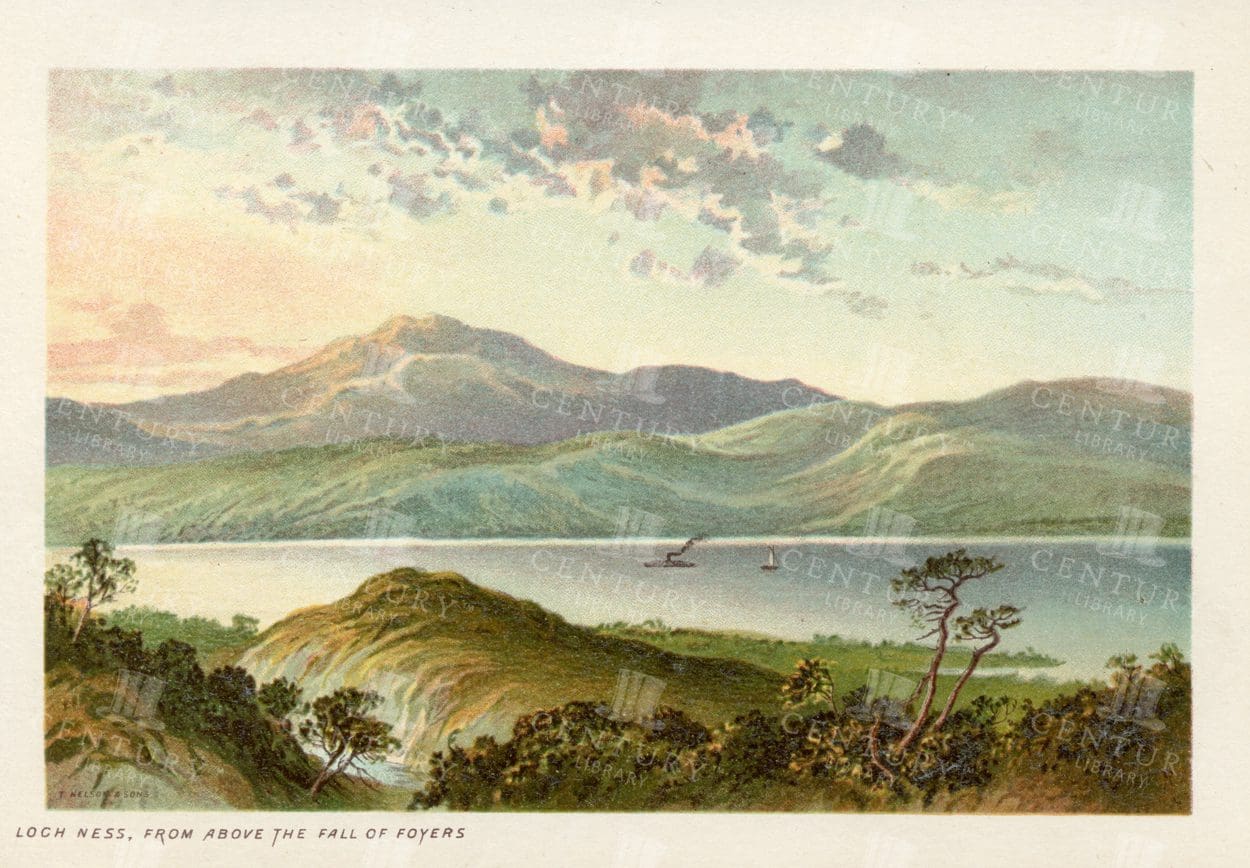

LOCH NESS from above the Fall of Foyers, Vintage 1895 Illustration
- Resolution: 4749px x 3240px
- Year of Print: 1895
- Artist: T. Nelson and Sons
Related Images


ANTIQUE Botanical Print – Variety of Botany Illustrations – 1851 Print
You’re looking at a well preserved original plate from Johann Georg Heck's “Iconographic Encyclopedia of Sciences, Literature and Art” published in 1851 by Rudolphe Garrigue in New York. We were extremely fortunate to acquire the full collection of illustrative prints from the series, which after many months of looking, proved to be very difficult!
- License Info
- Resolution: 9473 x 7817 300dpi
- Year of Print: 1851
- Artist: Johann Georg Heck
From this collection
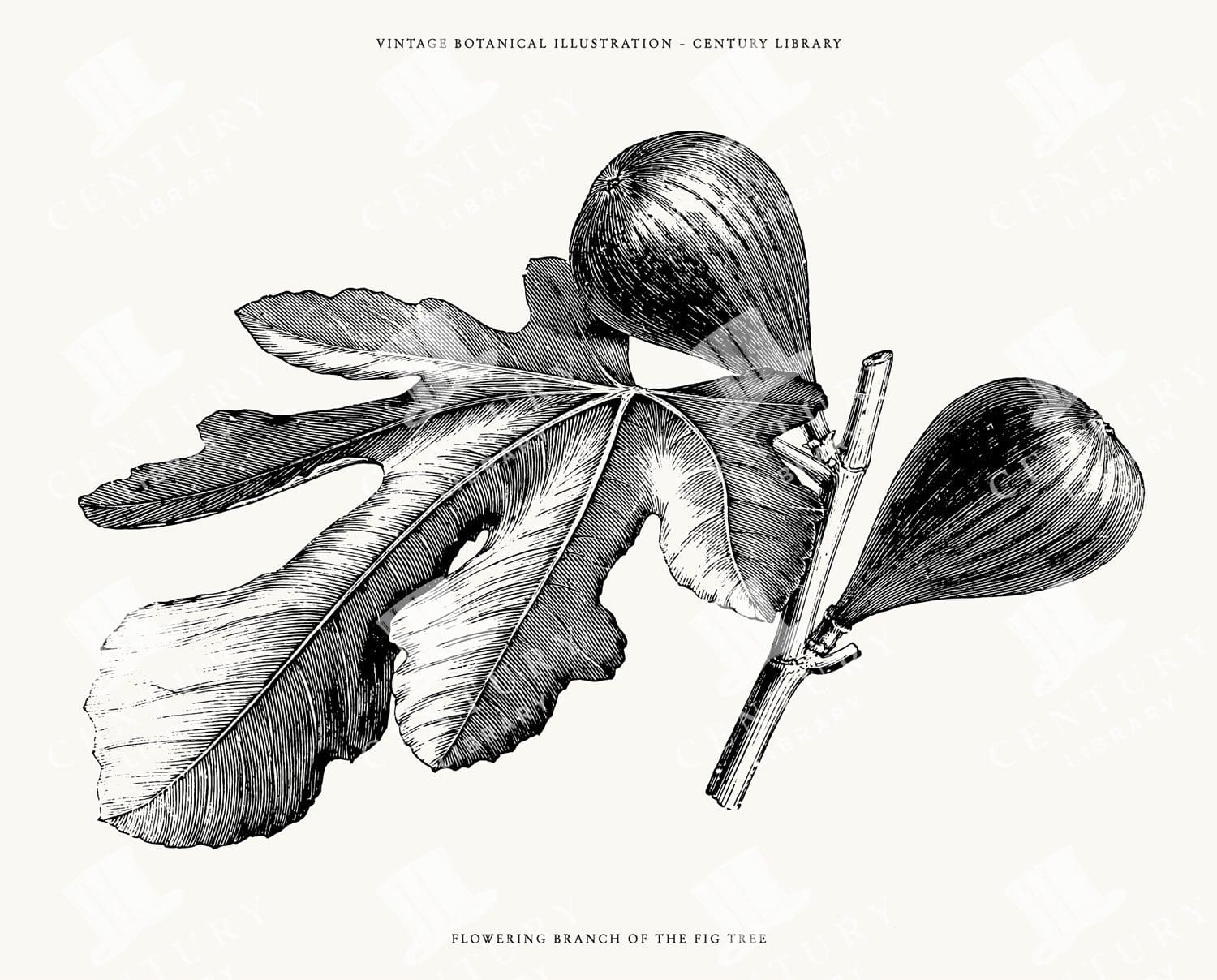

Vintage Fig Fruit Line Art Illustration – SVG, EPS, and PNG Formats
You're looking at a wonderfully restored Illustration of a Fig Fruit. The original antique image was extracted from its original background and converted to the following image formats: SVG (vector), EPS (vector), and, of course, PNG (300dpi raster image with transparent background).
- Image Type(s): EPS, SVG, PNG
Related Images
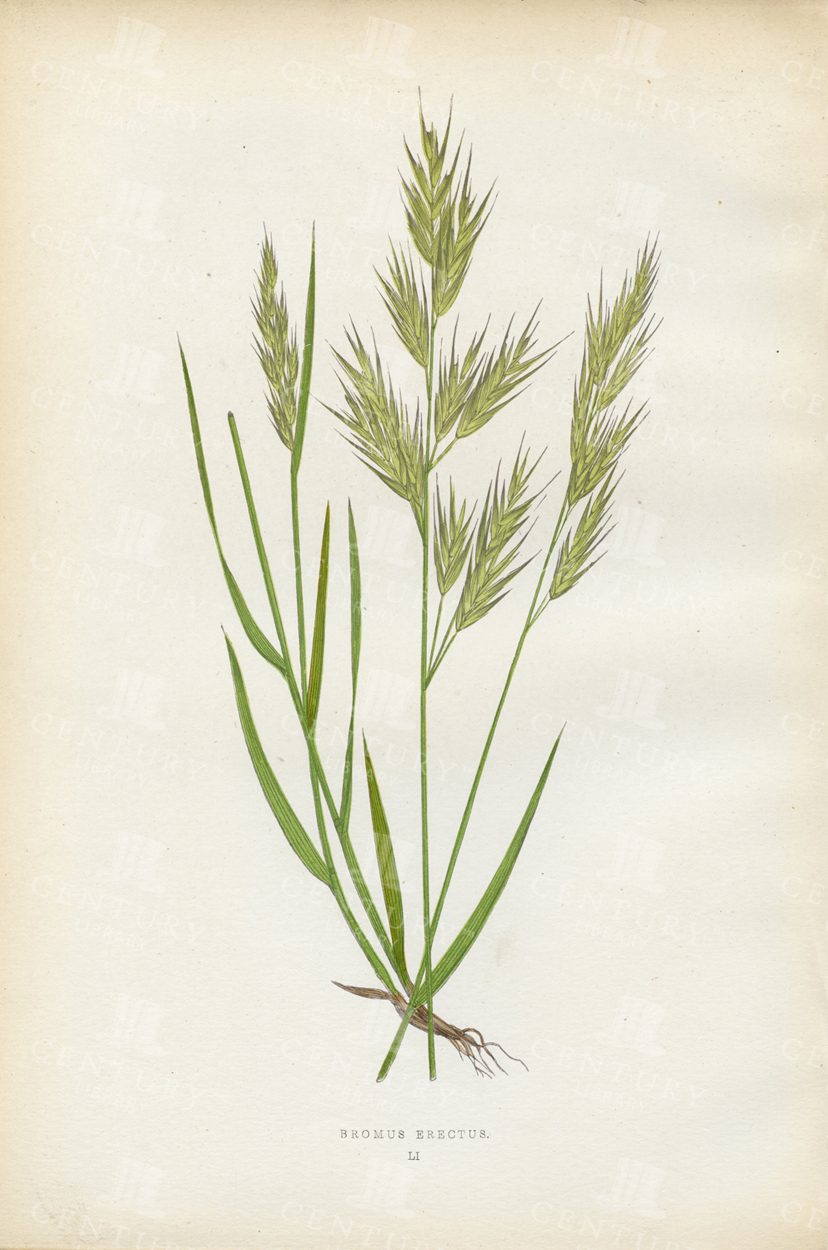

BROMUS ERECTUS – Vintage Botanical Print – British Grasses
- License Info
- Resolution: 5942px x 8979px
- Year of Print: 1891
- Artist: Edward Joseph Lowe
From this collection
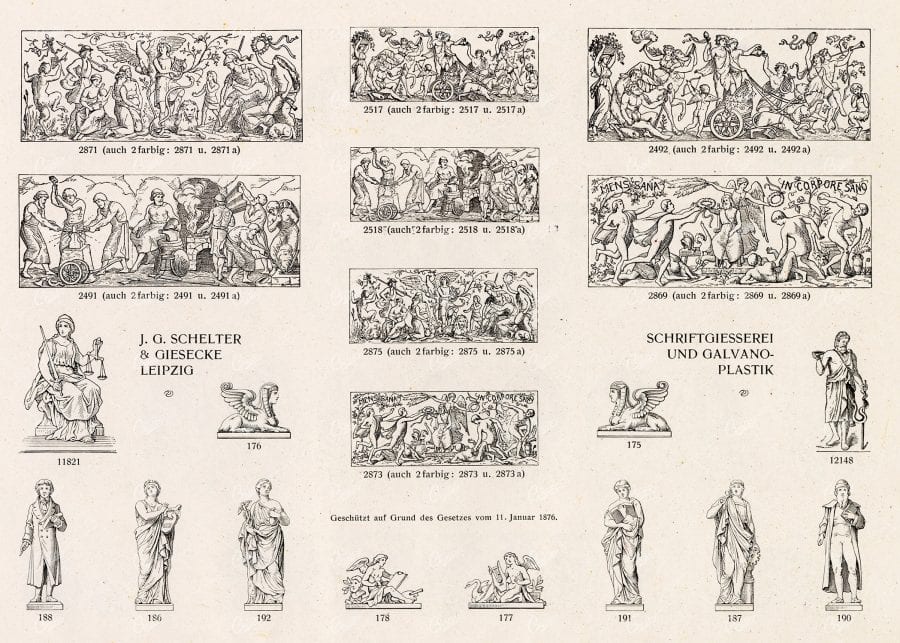
Support the Library
Our supporters and members help us continue collecting and restoring these wonderful pieces of art for the modern creator
Unlock Everything and Become a Member!
While a lot of the library is available for free, some is kept behind closed dusty doors only to be accessed by our lovely members.
